This morning we were planning to explore Riga’s Old Town which was founded in 1201 and is a former Hanseatic League state. Riga’s gorgeous old historical town centre has been a UNESCO World Heritage Site since 1997 and is well known for its blend of medieval architecture and, oddly, Art Nouveau buildings.
The first place on our ‘to visit’, list (largely due to the proximity to our hotel), was St. Peter’s Church which is the largest Lutheran church in Riga. St Peter’s first turns up in records dating from the very early 1200s after a fire swept through Riga in 1209, but the church was undamaged because it one of the few builgins in town of masonry construction. The history of the church’s construction is a weird blend of architectural styles – having elements of Gothic, Romanesque and early Baroque influences.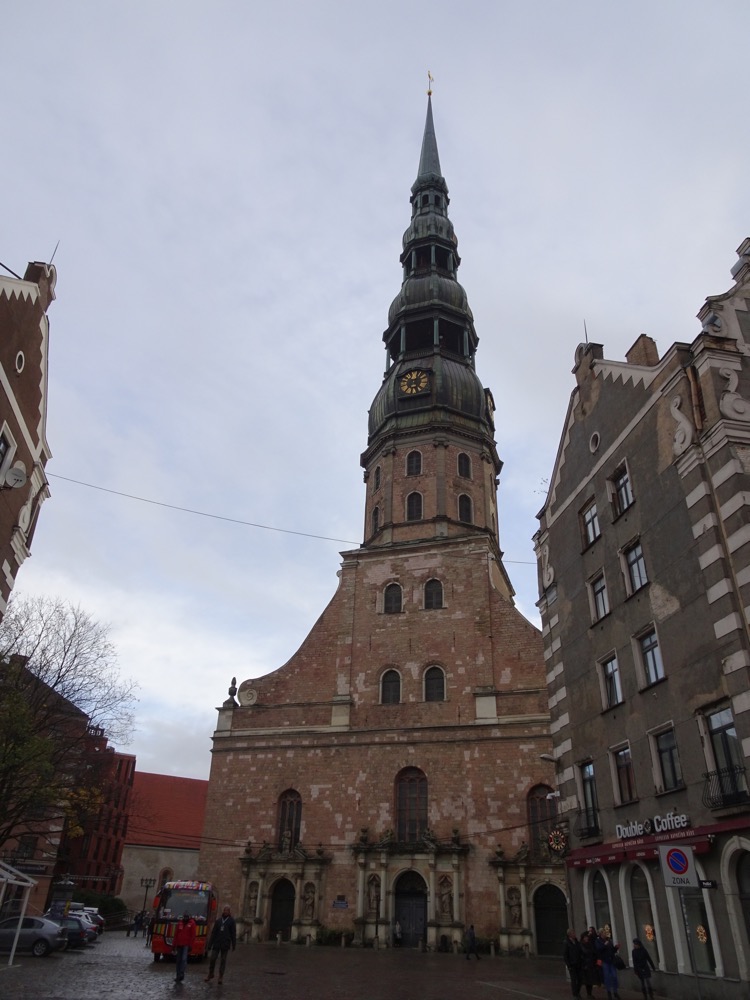
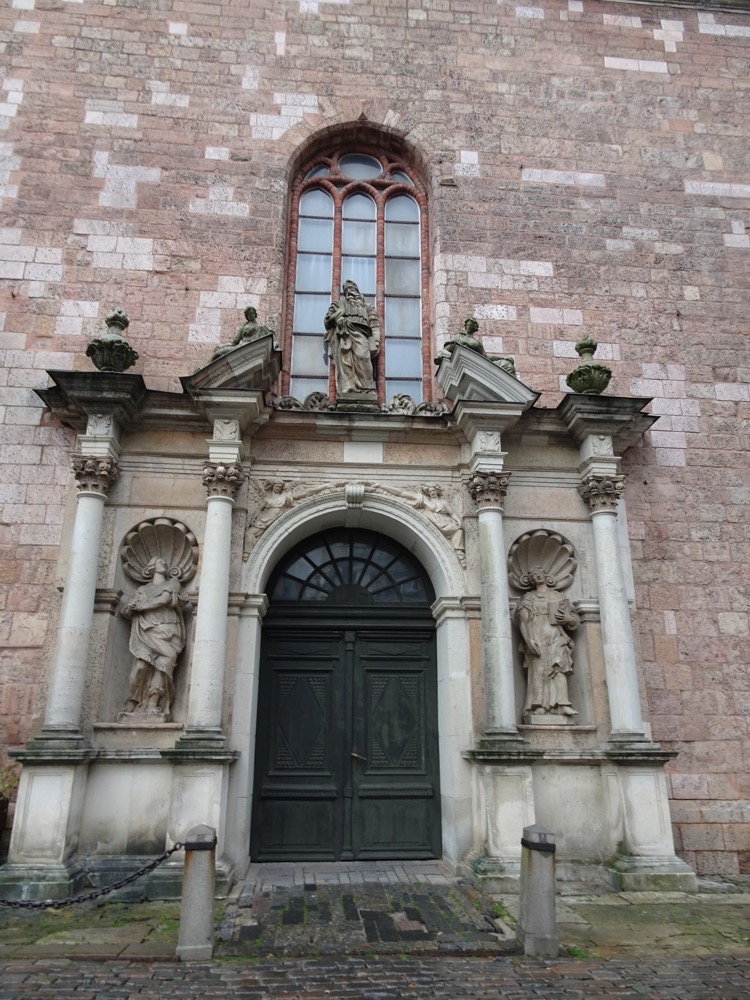
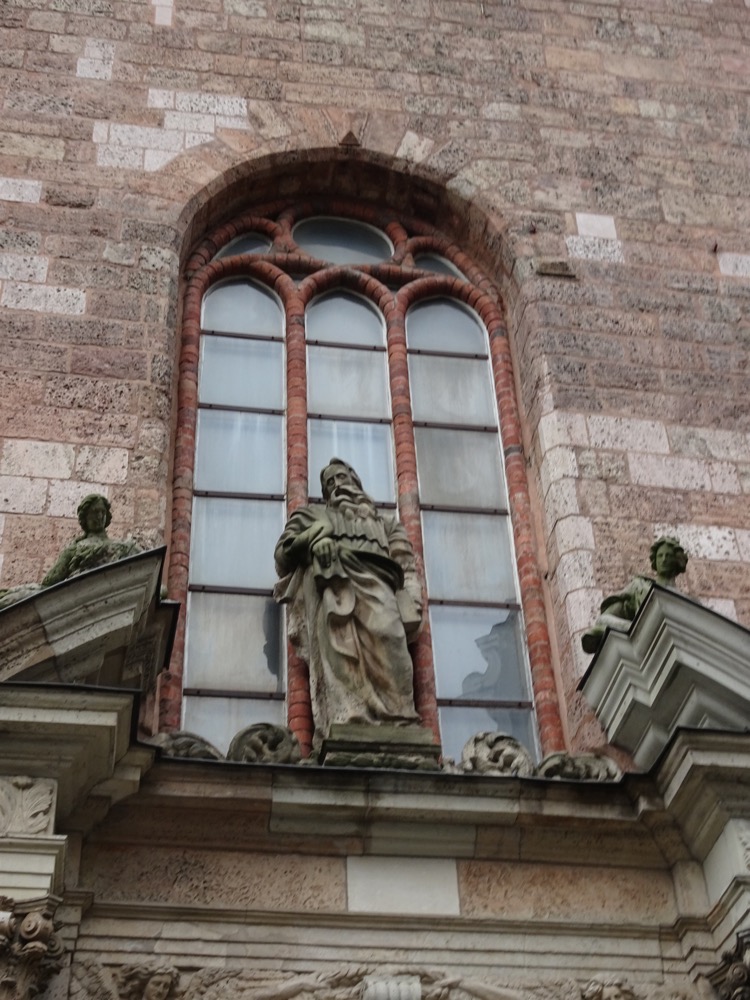
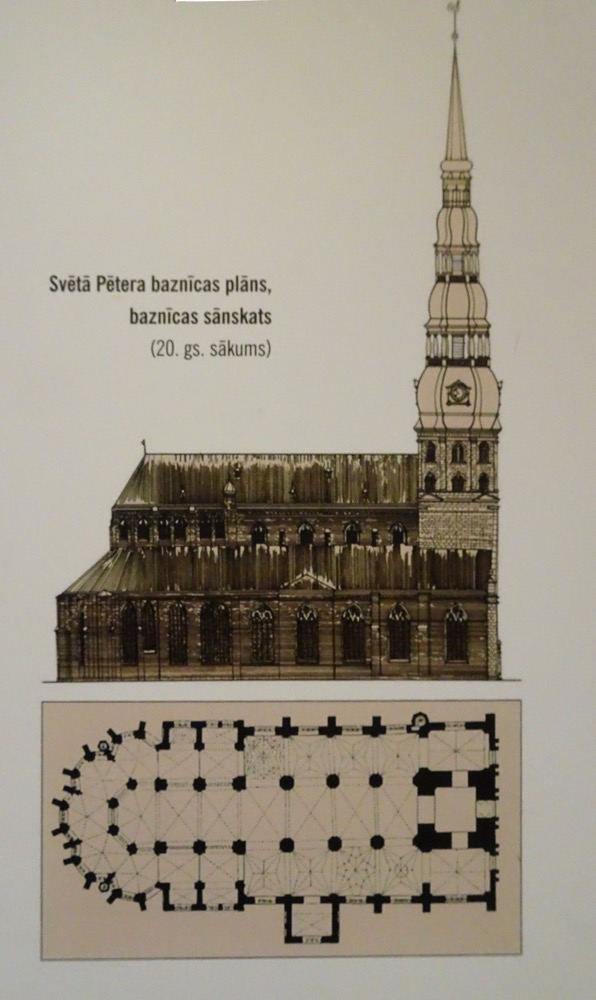
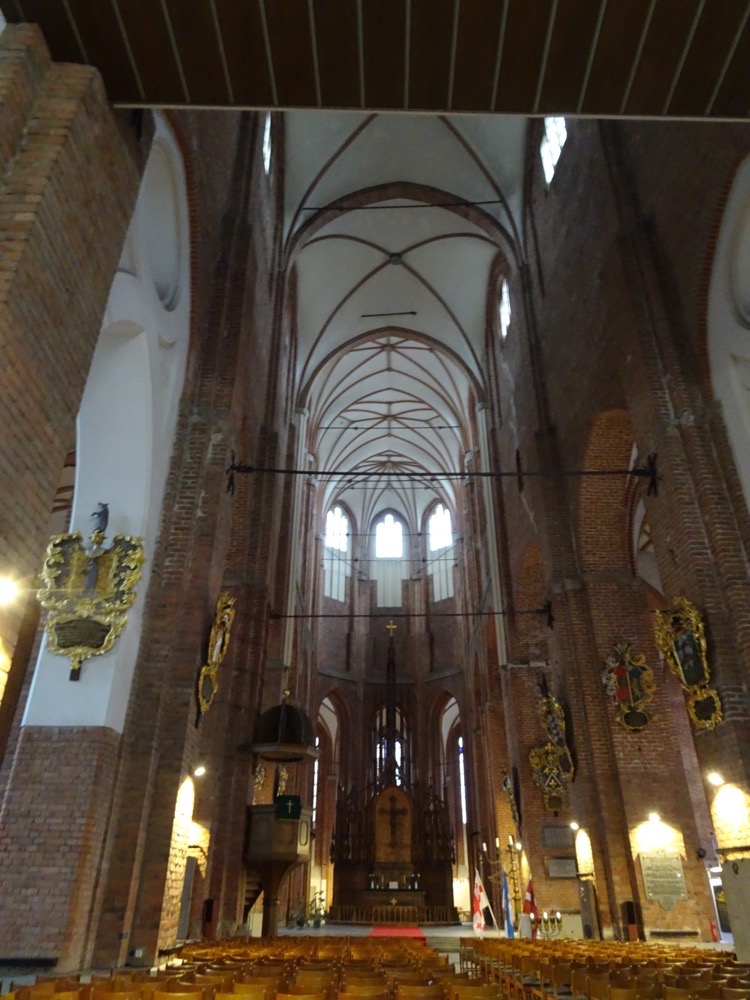
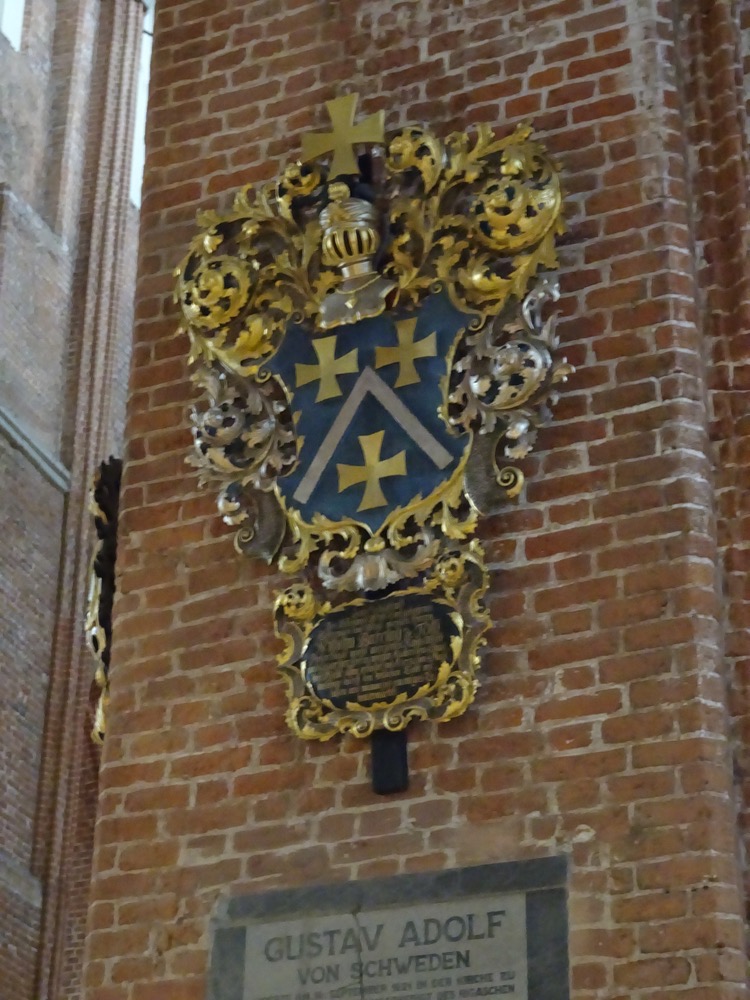
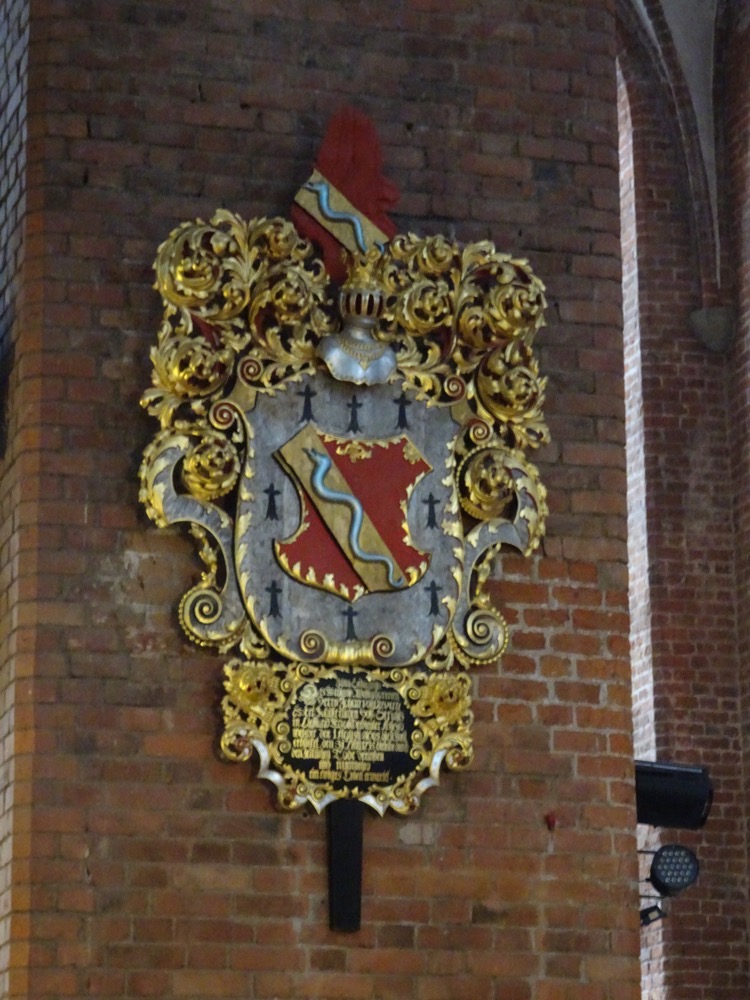
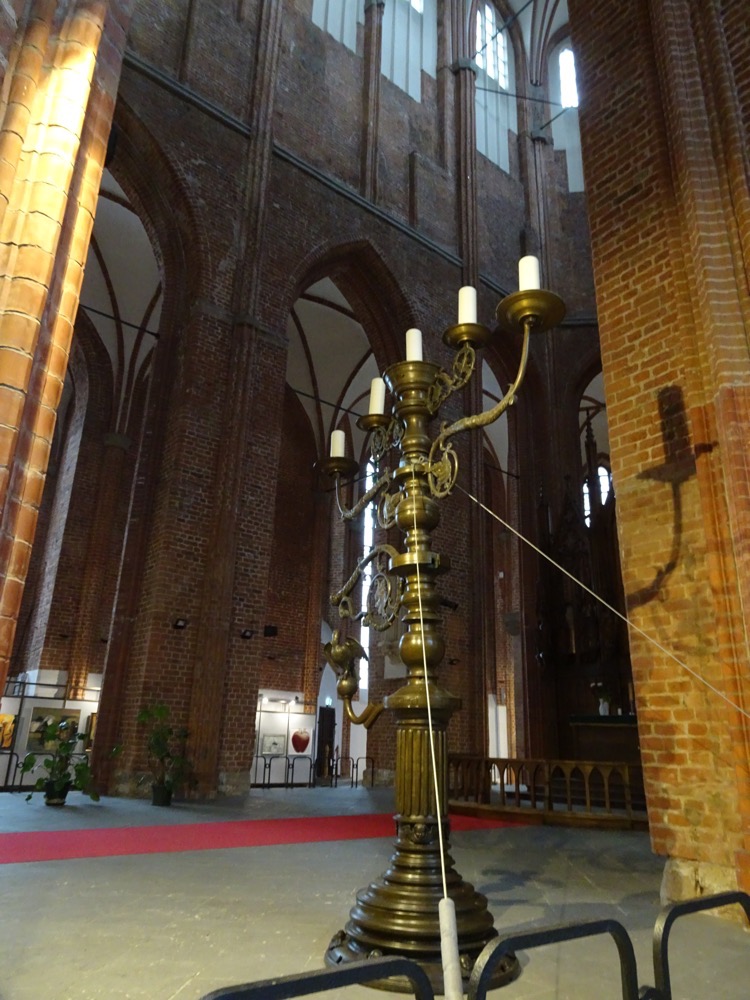 During World War II, the church lost this rather imposing bronze candelabrum that dates from 1596. It was taken by the Germans to the town of Włocławek during the actions to annexed Polish territories. It is seriously huge – 3.1m high, 3.8m wide and was bought by the Riga City Council from a local metal founder. After the war, it stayed on display at the Basilica Cathedral of the St. Mary of Assumption in Włocławek – Riga literally only got it back in 2012 as a result of a recent repatriation agreement relating to stolen cultural properties.
During World War II, the church lost this rather imposing bronze candelabrum that dates from 1596. It was taken by the Germans to the town of Włocławek during the actions to annexed Polish territories. It is seriously huge – 3.1m high, 3.8m wide and was bought by the Riga City Council from a local metal founder. After the war, it stayed on display at the Basilica Cathedral of the St. Mary of Assumption in Włocławek – Riga literally only got it back in 2012 as a result of a recent repatriation agreement relating to stolen cultural properties. 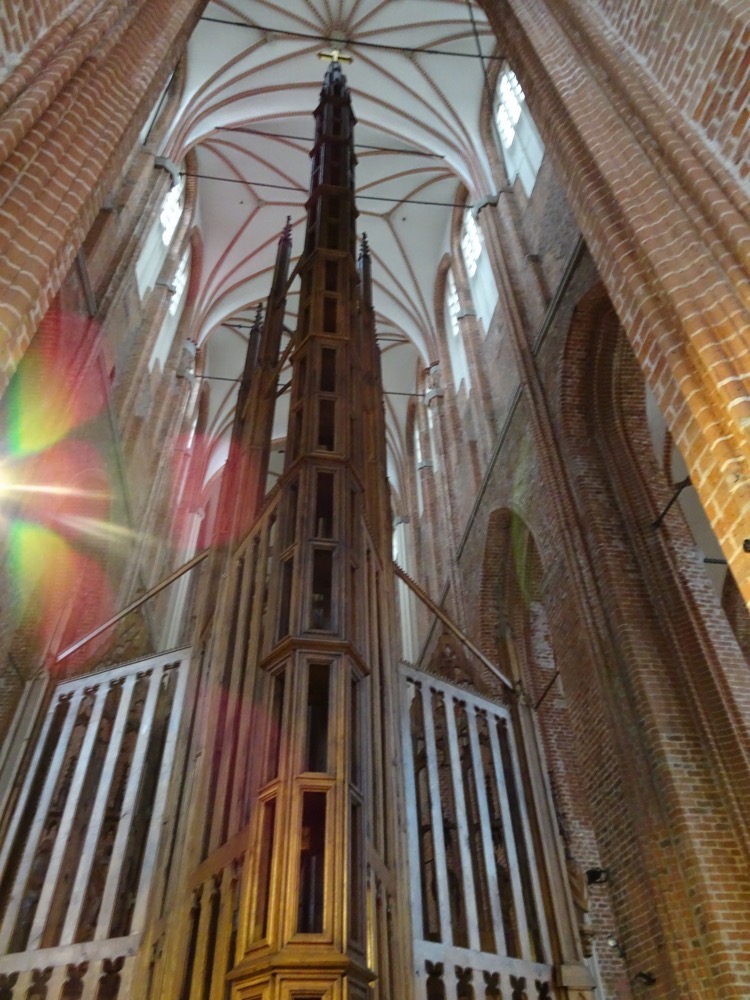 While we are walking through this amazing Gothic/Romanesque/Baroque cathedral, I found it (yet again) rather jarring to be met with a modern art exhibition. I have experienced this same discombobulation on a number of occasions – most notably at the Hagia Sofia, which should most definitely NOT be used a space for a modern art exhibition – and I got the same feeling today. Historical cathedral, fabulous. Vaulted ceilings, lovely. Gothic timberwork, beautiful. Medieval stained glass, stunning… such a shame about the modern art.
While we are walking through this amazing Gothic/Romanesque/Baroque cathedral, I found it (yet again) rather jarring to be met with a modern art exhibition. I have experienced this same discombobulation on a number of occasions – most notably at the Hagia Sofia, which should most definitely NOT be used a space for a modern art exhibition – and I got the same feeling today. Historical cathedral, fabulous. Vaulted ceilings, lovely. Gothic timberwork, beautiful. Medieval stained glass, stunning… such a shame about the modern art.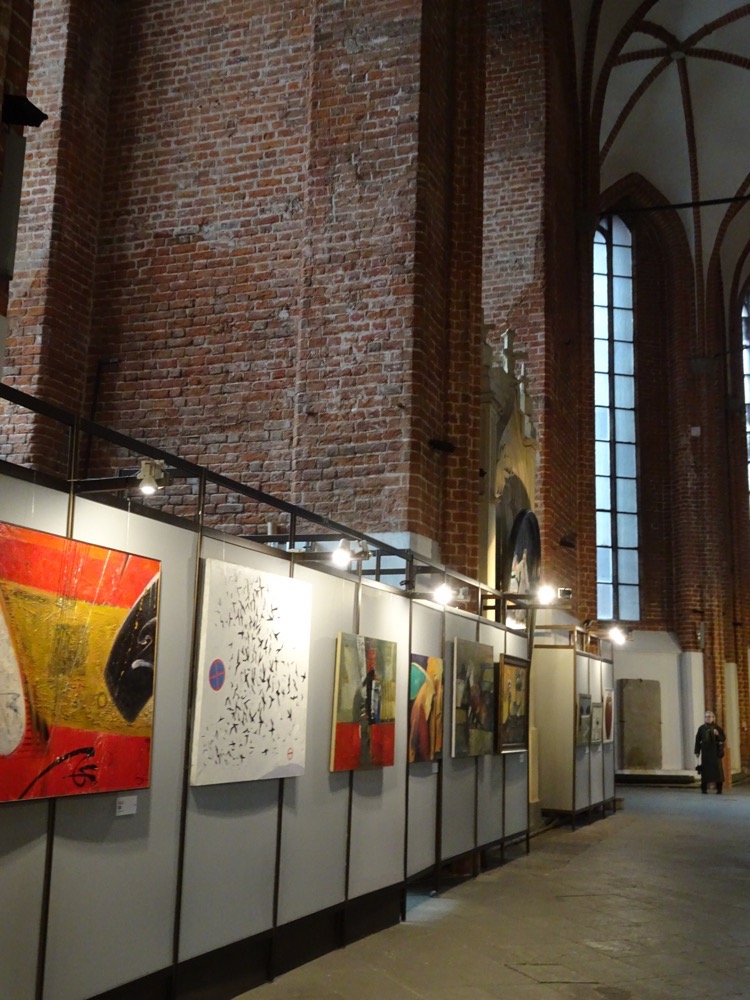 If any of you have ever seen the Hugh Grant movie, ‘Mickey Blue Eyes’, you’ll know where I am coming from with this… :/
If any of you have ever seen the Hugh Grant movie, ‘Mickey Blue Eyes’, you’ll know where I am coming from with this… :/ 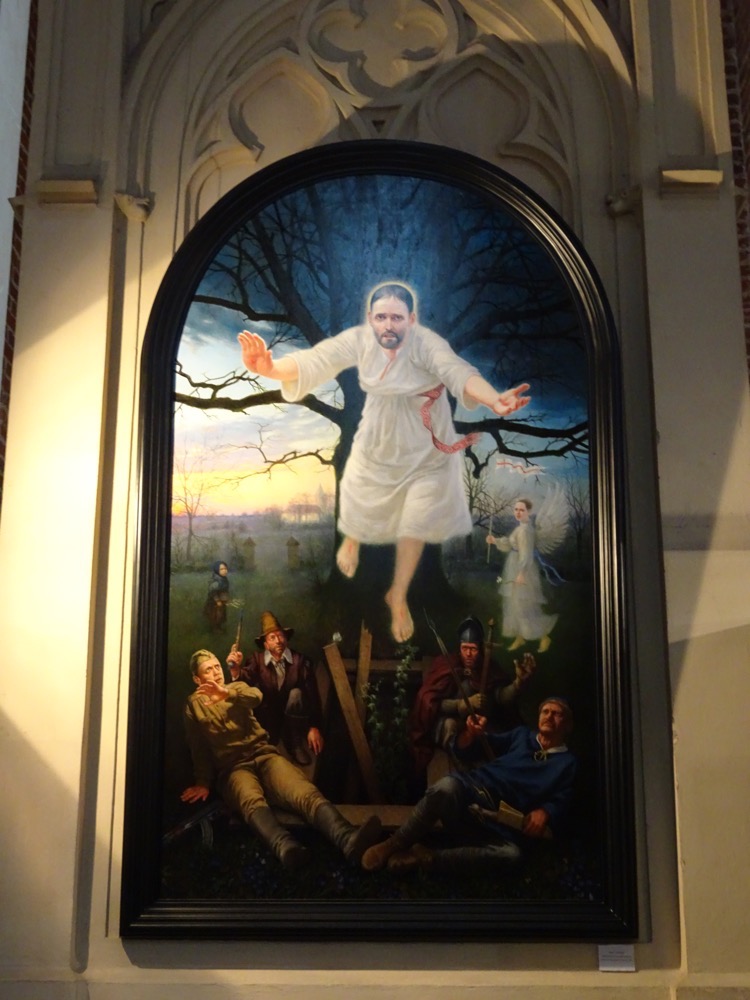 This piece no more belongs in this church than it does in a fancy auction house. :/
This piece no more belongs in this church than it does in a fancy auction house. :/ 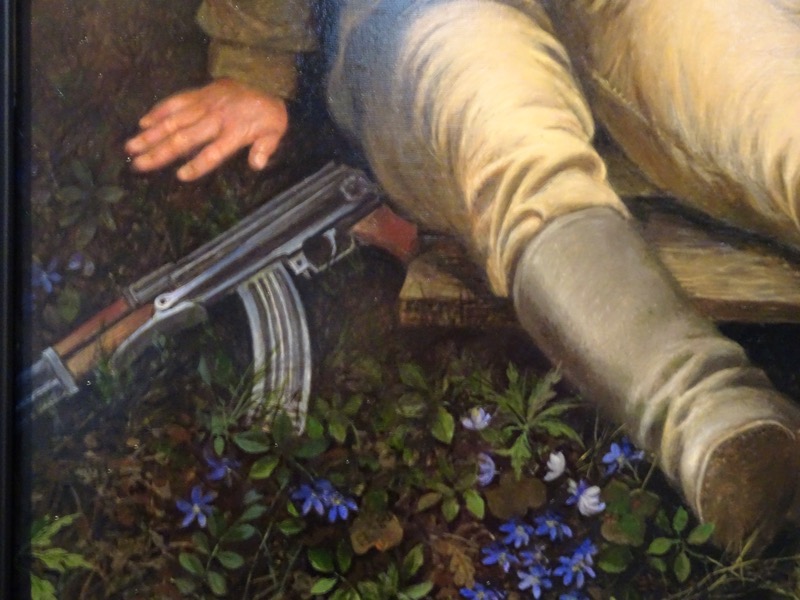 Anyway – if any of you ever happen to be curating spaces in fancy Gothic cathedrals, can you please please please – spare us the fucking modern art. It’s just not what people are here for. Cheers. Ta.
Anyway – if any of you ever happen to be curating spaces in fancy Gothic cathedrals, can you please please please – spare us the fucking modern art. It’s just not what people are here for. Cheers. Ta.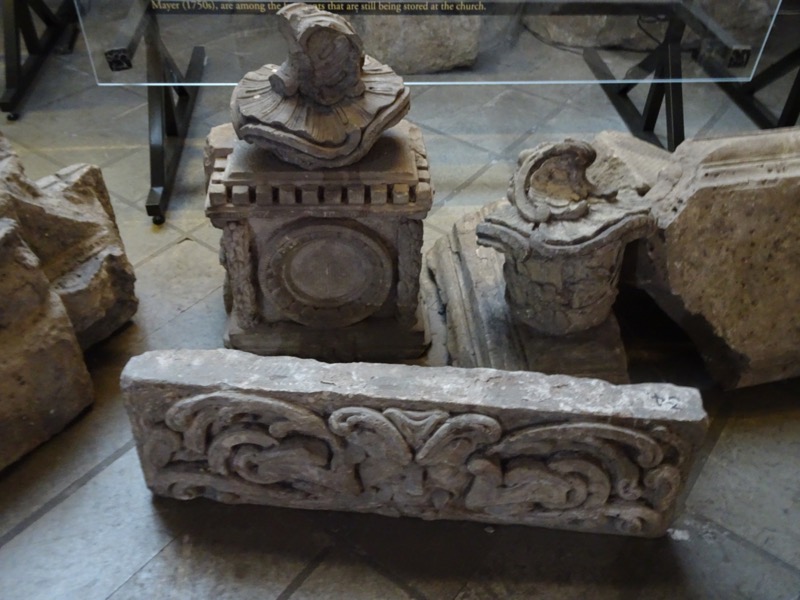
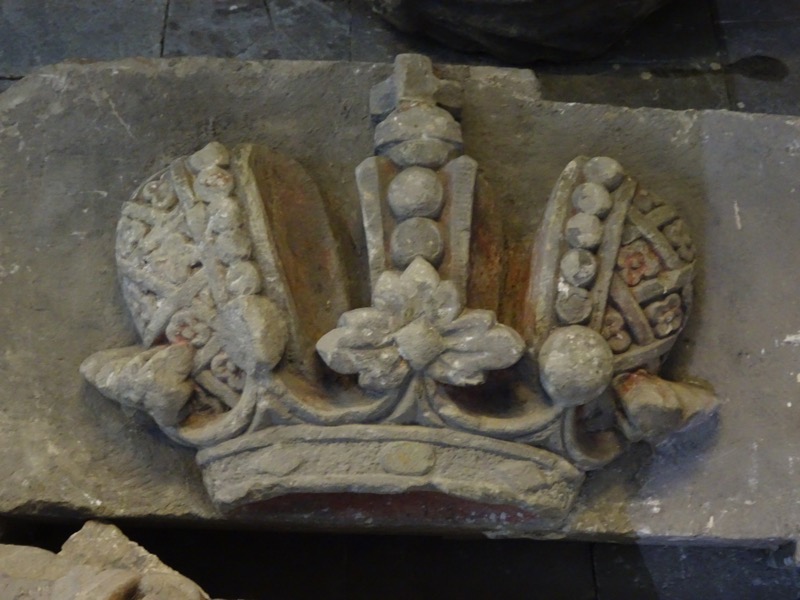
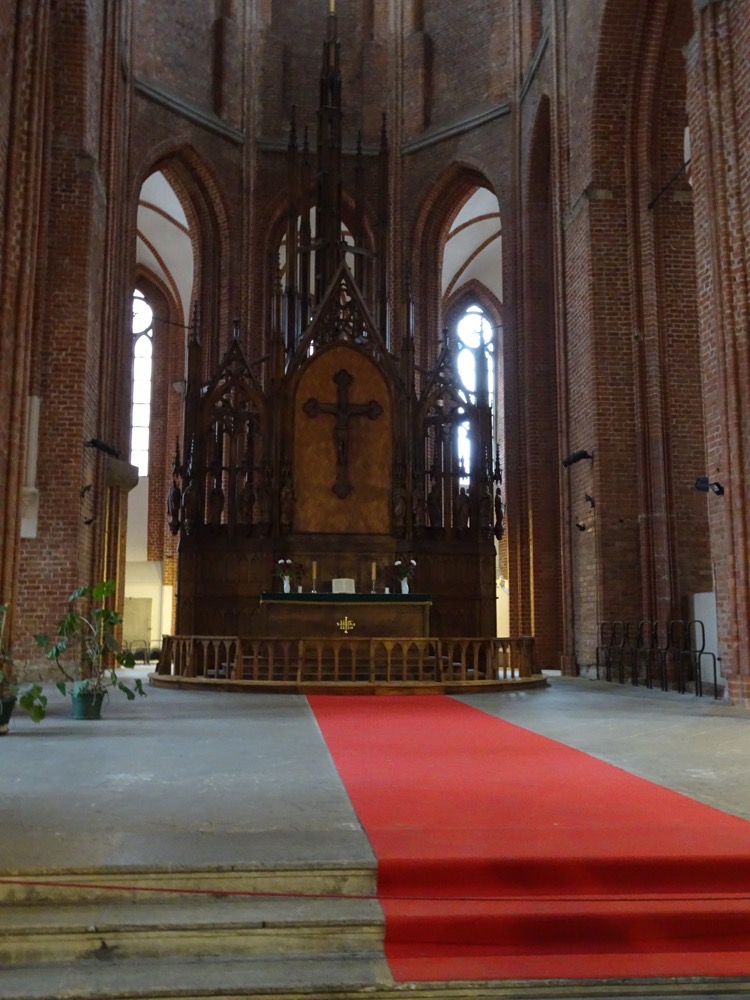
Directly across the road from St Peter’s is an odd little shop that caught my attention and we thought we’d pop in. It is called Baltu Rotas – here is their website: http://www.balturotas.lv/us In their little store they have some amazing recreations as well as some authentic extant relics of medieval Latvian jewellery! Colour me surprised. Most of the pieces in store are either copies of local found extant pieces or inspired by extant pieces found in the Baltic area. Absolutely gorgeous stuff… I may have come home with some new pieces which I am very happy about (who said money can’t buy you happiness?). These are just a few pictures of their small ‘museum’ room.
Next we went to a walk to the House of the Blackheads – no, it’s not a house for fans of /r/popping (ewww!) but rather a building that was originally erected between 1300-1350AD for the Brotherhood of Blackheads. The Brotherhood was a guild for unmarried merchants, shipowners, and foreigners. The building had major construction works done later in 1560 and again in 1886 when lots of the sculptures and ornamentations were added – but like nearly everything else in Europe, it was bombed to hell by the Germans on June 28, 1941, leaving the building somewhat decimated so that the Soviets could come and totally leave the building in ruins in 1948 when they came marching through bombing things. The current incarnation of the building was created from 1995 to 1999, and I have to say, it is very very impressive. Gorgeous brickwork, beautiful sculptures and I love the bright clock.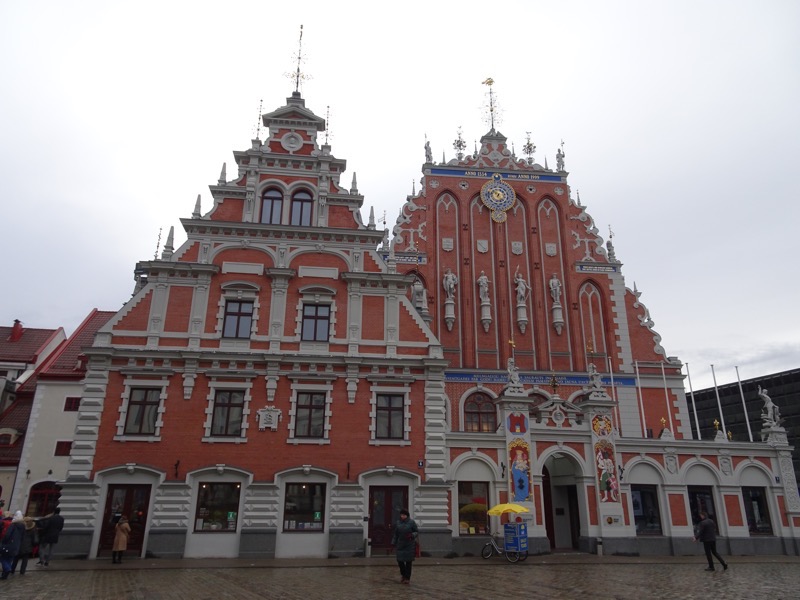 Most of the Blackheads members were of German descent and they would travel and supply exotic goods from overseas. Being part of the guild provided protection for their ships and caravans from pirates and robbers. The Blackheads had St. Maurice as a patron saint, and he was usually as a black soldier in knight’s armour, hence Blackheads. The Blackheads were effectively Riga’s ruling elite, serving as councillors and members of the Great Guild.
Most of the Blackheads members were of German descent and they would travel and supply exotic goods from overseas. Being part of the guild provided protection for their ships and caravans from pirates and robbers. The Blackheads had St. Maurice as a patron saint, and he was usually as a black soldier in knight’s armour, hence Blackheads. The Blackheads were effectively Riga’s ruling elite, serving as councillors and members of the Great Guild. 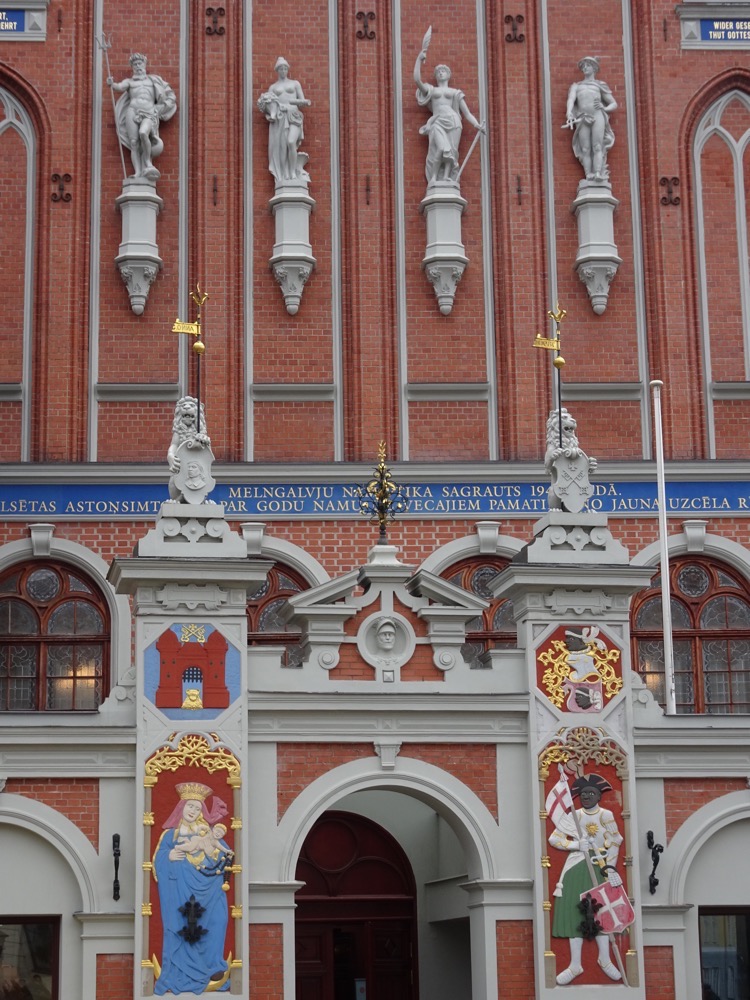
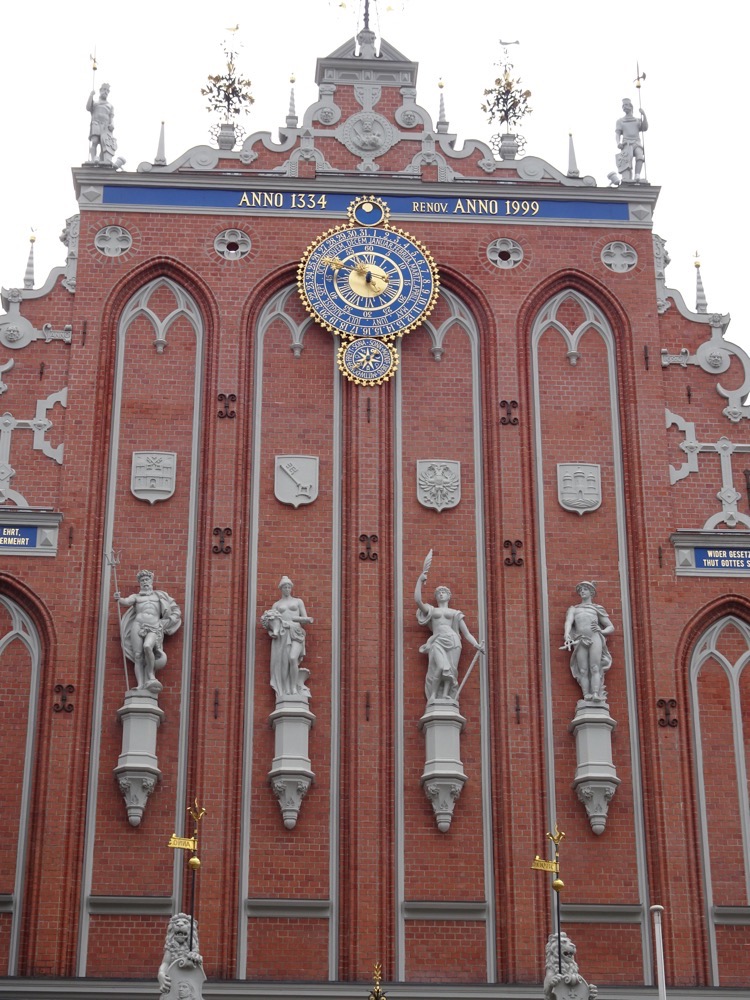
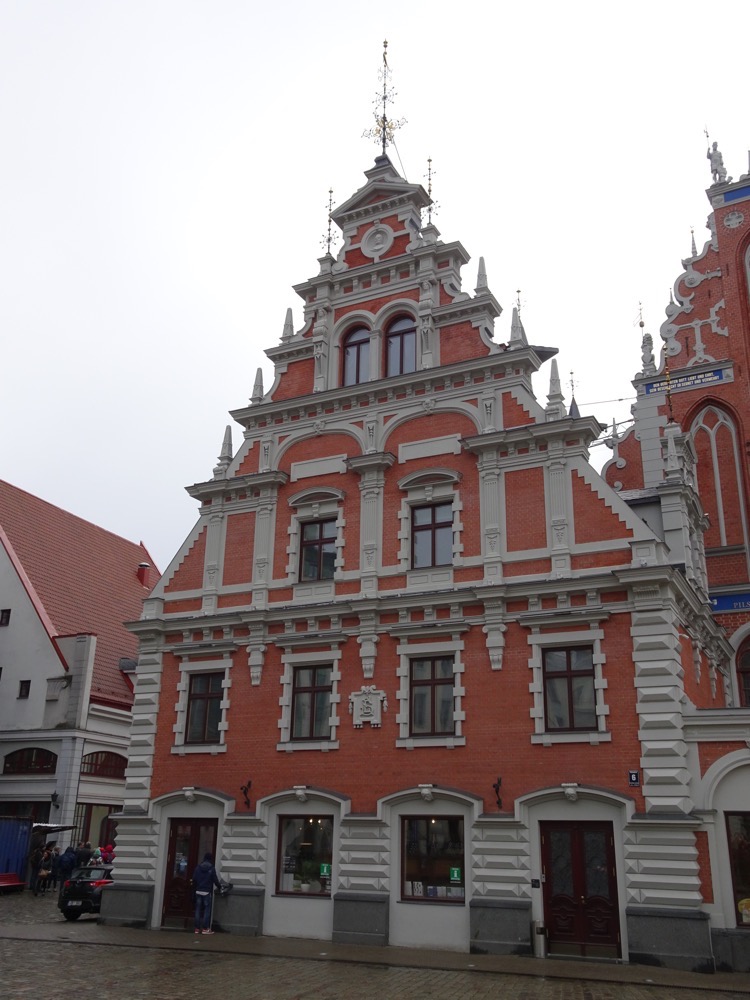
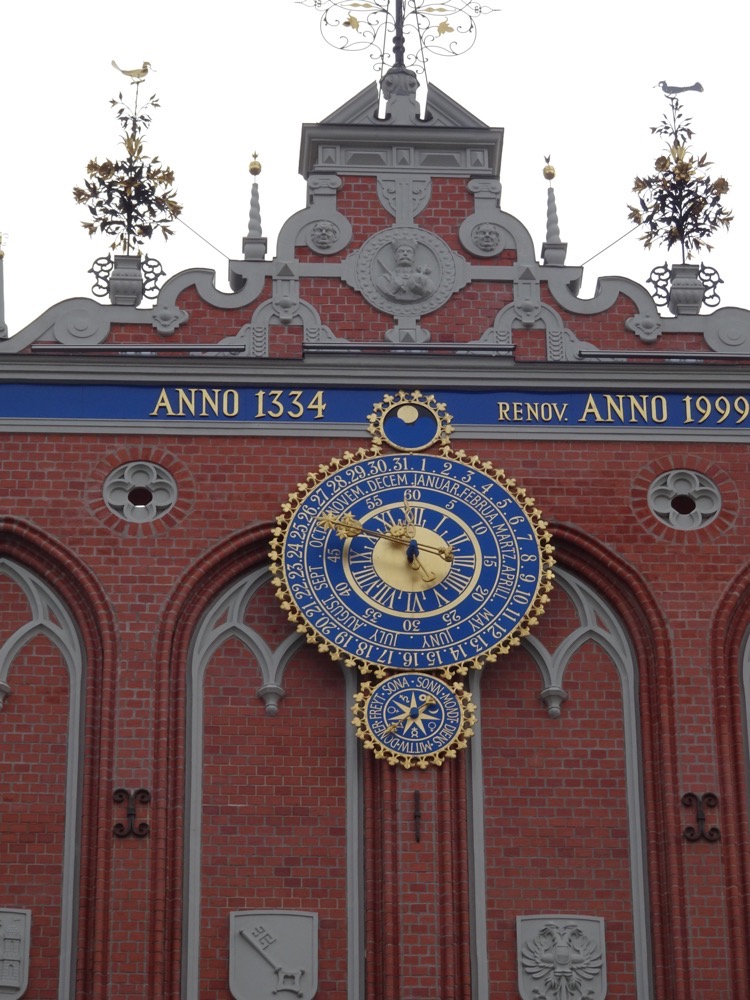 Nearby we found a cute little indoor market. Mostly handicrafts being sold by matronly little grandmas huddling in the cold. The weather was not so bad if you keep moving, but when you stop moving it gets pretty brutally cold pretty quick.
Nearby we found a cute little indoor market. Mostly handicrafts being sold by matronly little grandmas huddling in the cold. The weather was not so bad if you keep moving, but when you stop moving it gets pretty brutally cold pretty quick.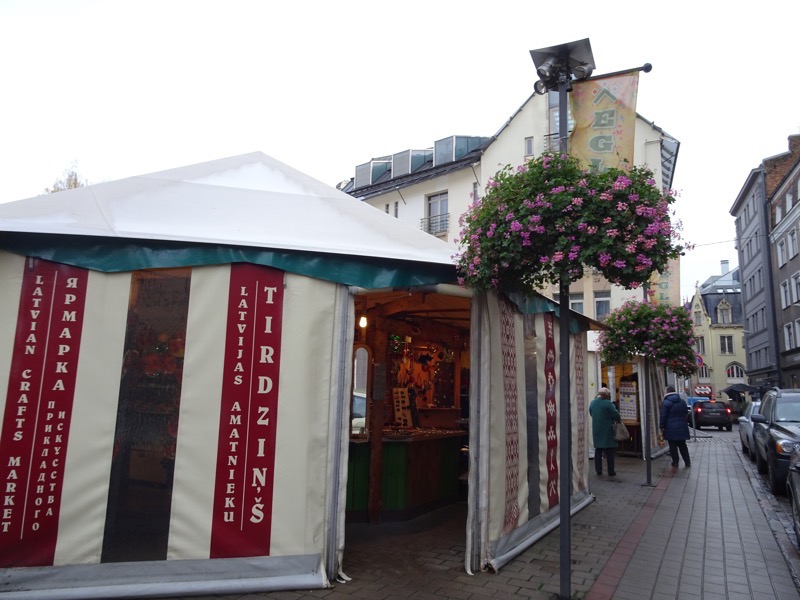 Glassware, knitted goods, leatherwork, woodwork and all sorts.
Glassware, knitted goods, leatherwork, woodwork and all sorts. 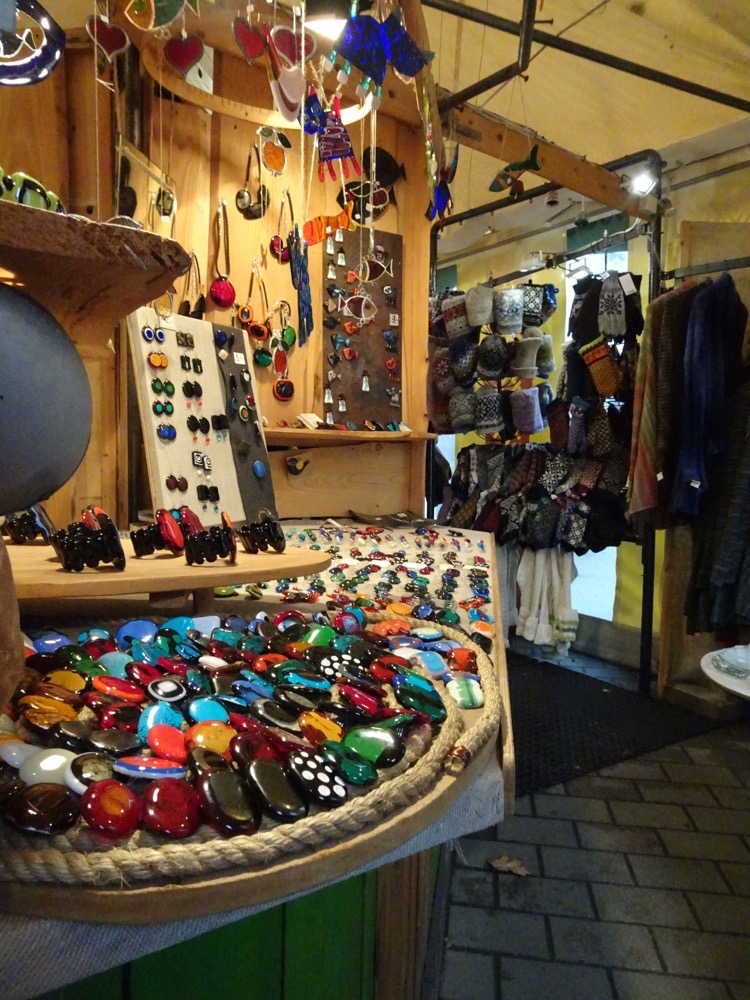
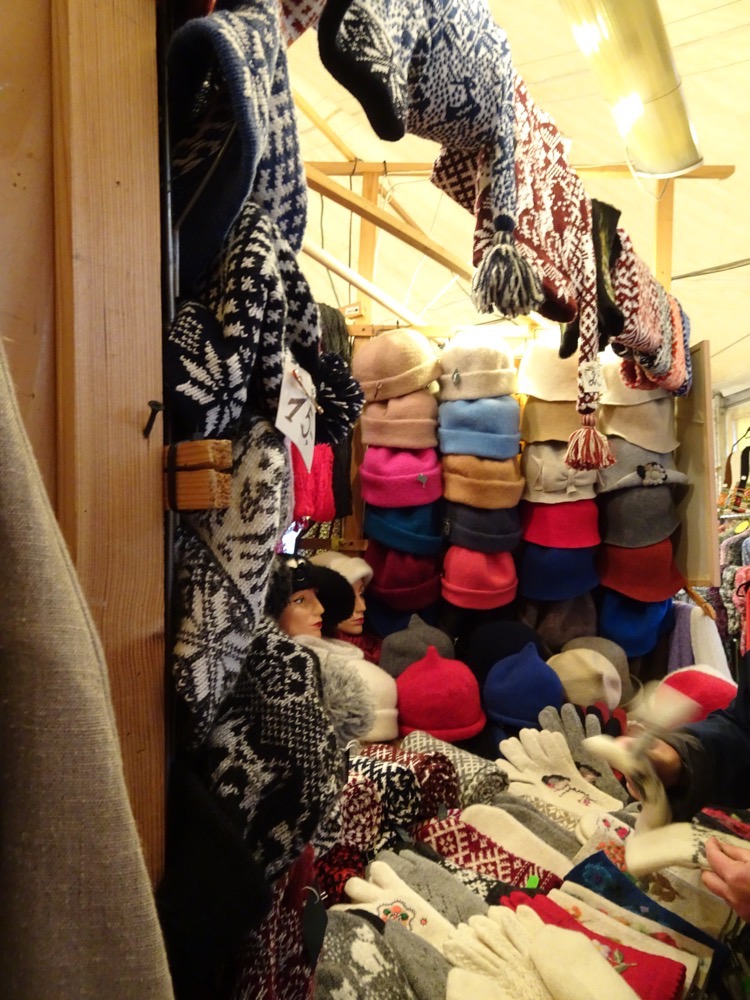
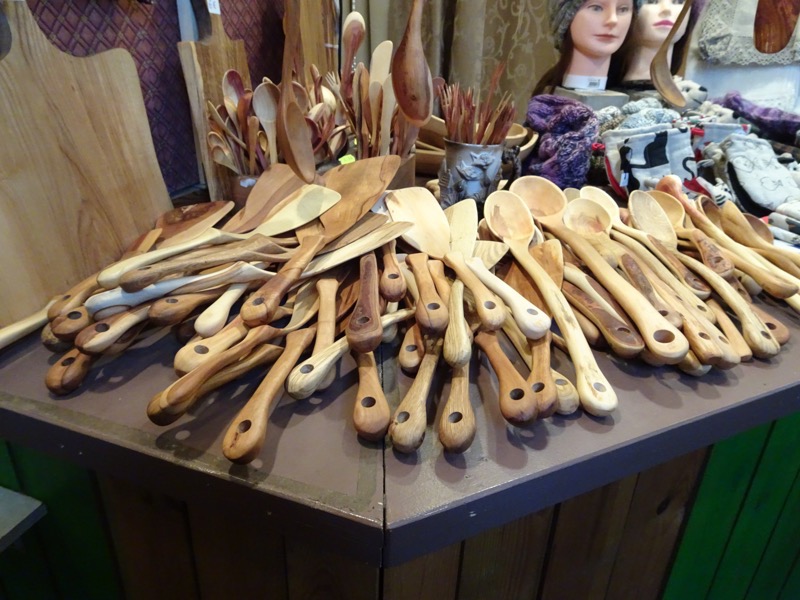
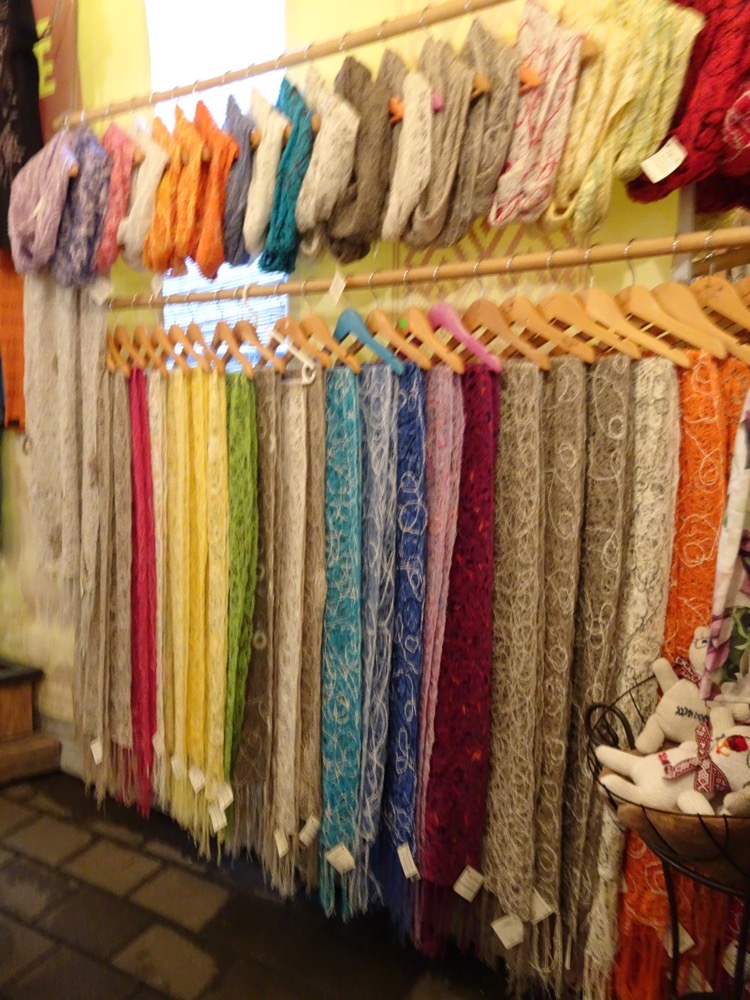 Spat back out on the street, we walked past the National Academy of Drama.
Spat back out on the street, we walked past the National Academy of Drama.
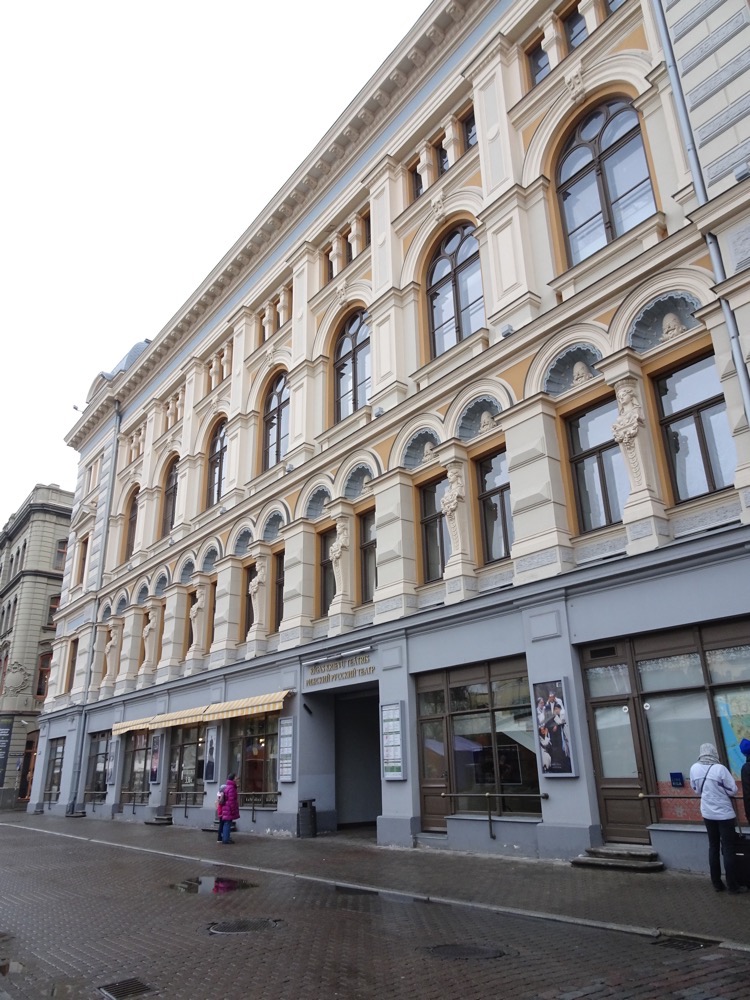 I love their building… mostly for the bees.
I love their building… mostly for the bees.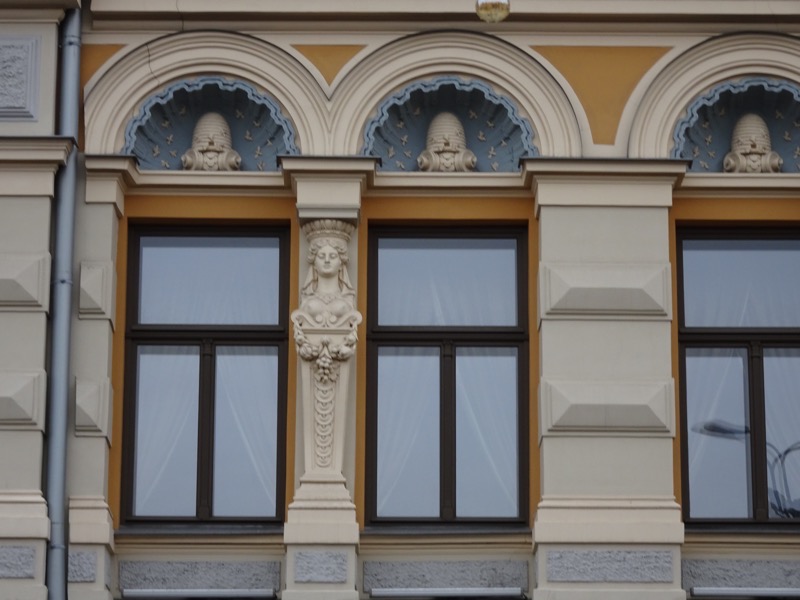 BEES?
BEES?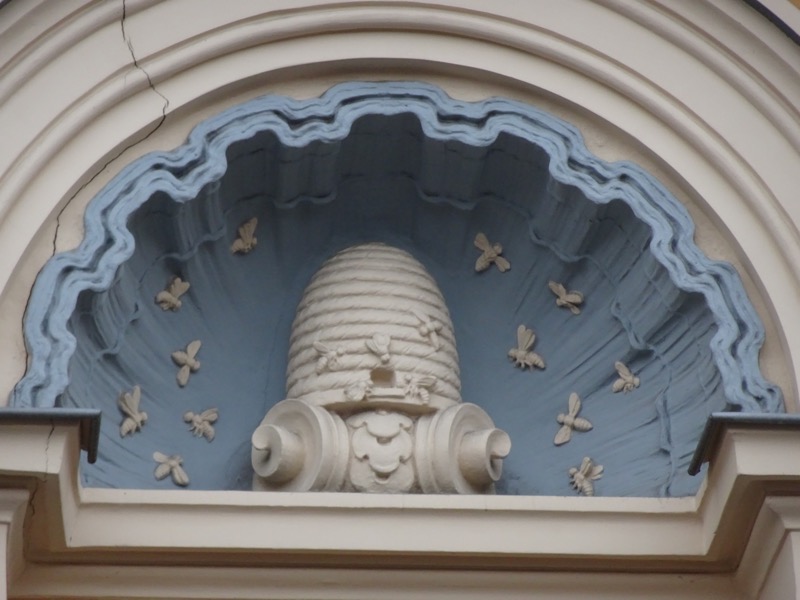 We then came across the touristy touristy square of restaurants that must be absolutely packed in the summer season. Lots of afresco dining and food to suit every taste – you could even by sausage here by the metre!
We then came across the touristy touristy square of restaurants that must be absolutely packed in the summer season. Lots of afresco dining and food to suit every taste – you could even by sausage here by the metre!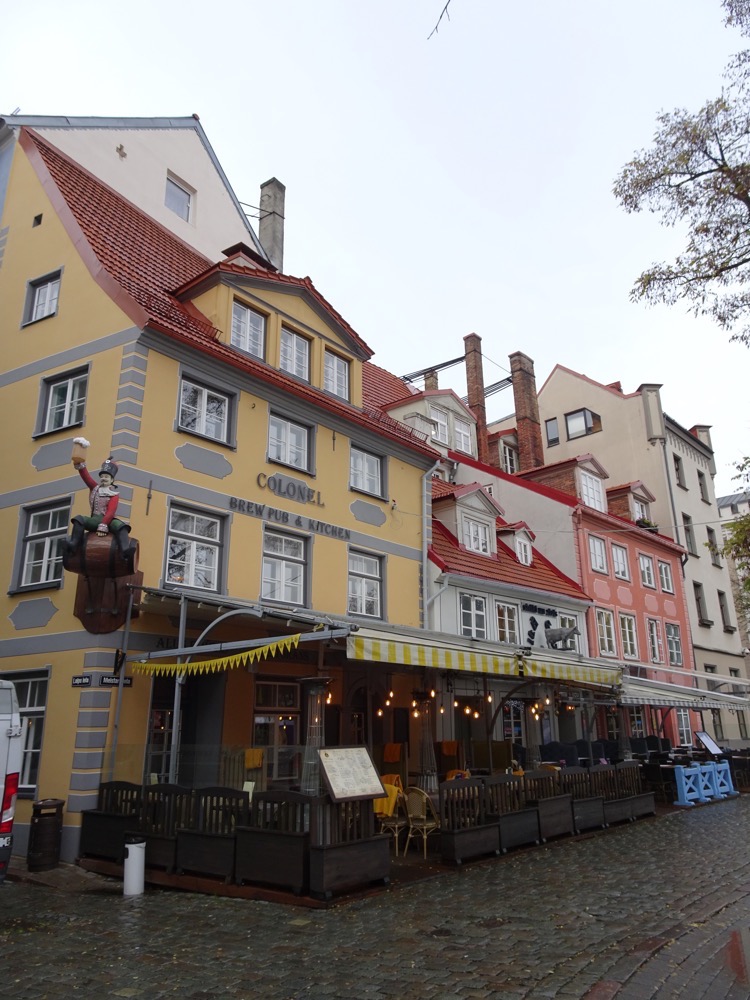
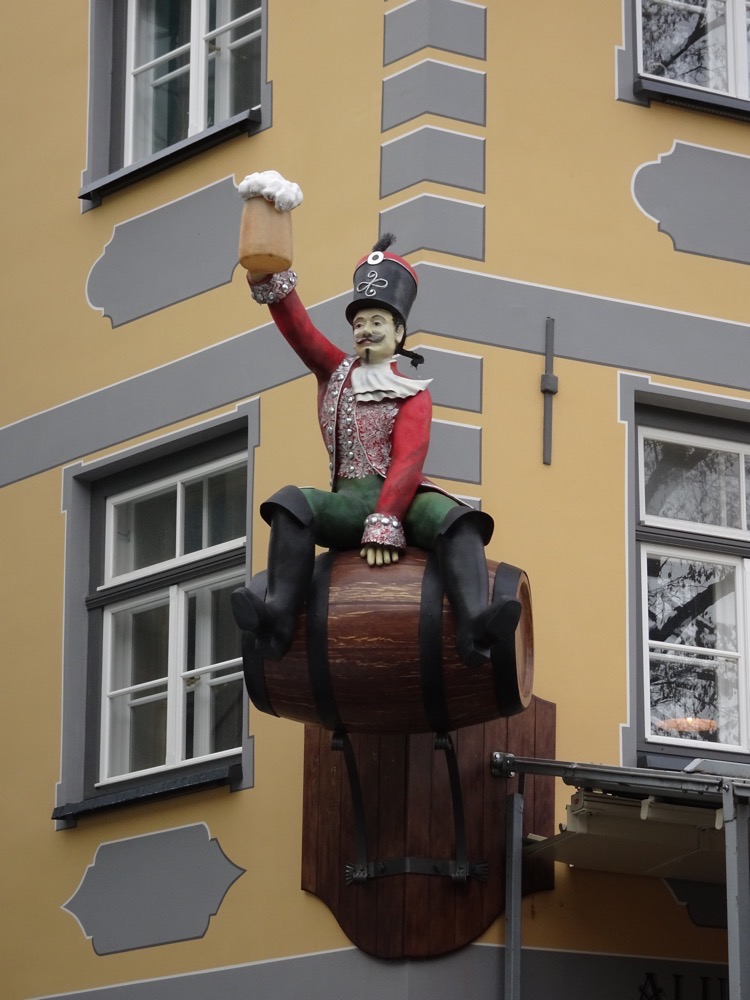
Around the corner is the Rigan monument to the Baltic Way that matches the ones we saw in Vilnius and Tallinn. 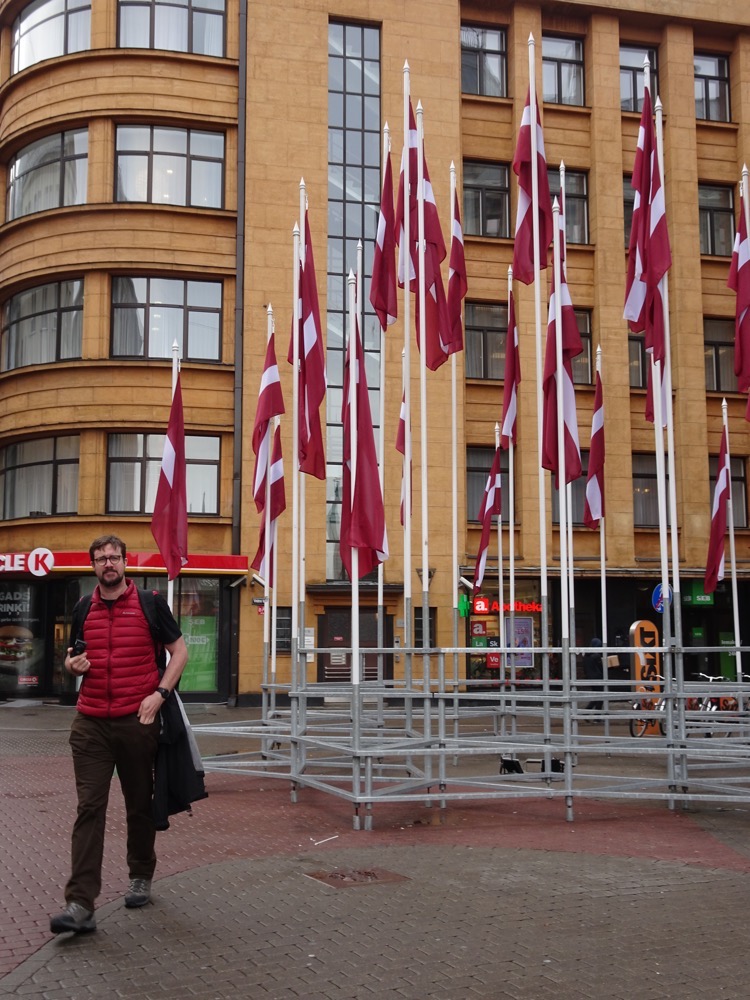 Still such a mindblowing yet peaceful protest… 2,000,000 people holding hands across 675kms. I can’t really picture it.
Still such a mindblowing yet peaceful protest… 2,000,000 people holding hands across 675kms. I can’t really picture it.
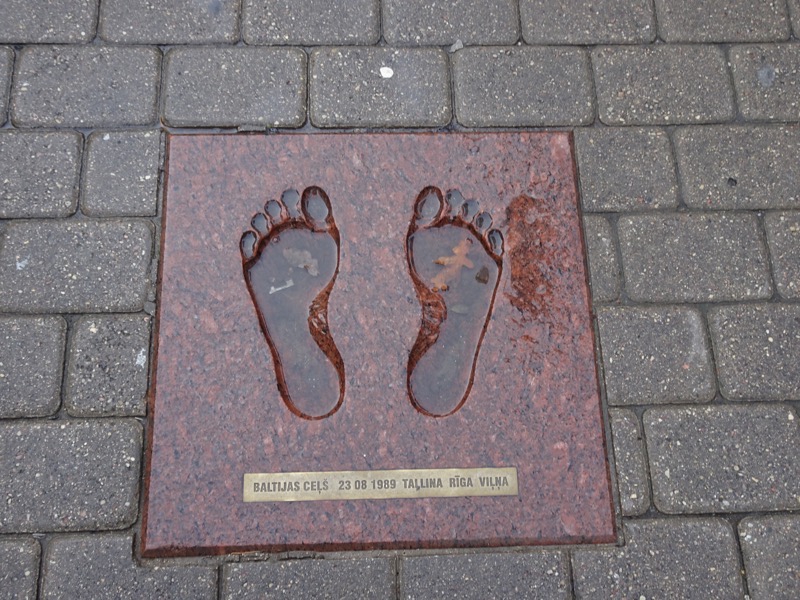
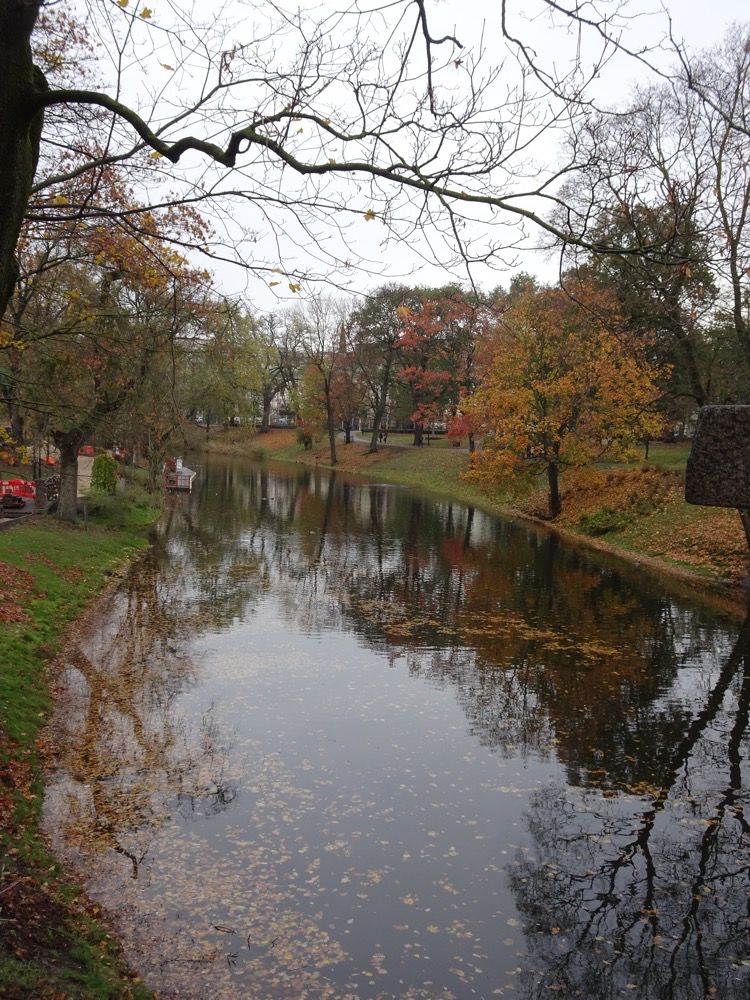 Across the river is the Freedom Monument which is a memorial honouring all the soldiers that were killed during the Latvian War of Independence (1918–1920). They are commemorating the 100th anniversary of this war at the moment and ‘Latvia100’ is everywhere. The monument is very much considered to be an important symbol of the freedom and the independent sovereignty of Latvia. It was unveiled in 1935, and even though Lativa was occupied by both Germany and the Soviets since, this independence monument serves as the focal point of public gatherings and official ceremonies in Riga.
Across the river is the Freedom Monument which is a memorial honouring all the soldiers that were killed during the Latvian War of Independence (1918–1920). They are commemorating the 100th anniversary of this war at the moment and ‘Latvia100’ is everywhere. The monument is very much considered to be an important symbol of the freedom and the independent sovereignty of Latvia. It was unveiled in 1935, and even though Lativa was occupied by both Germany and the Soviets since, this independence monument serves as the focal point of public gatherings and official ceremonies in Riga.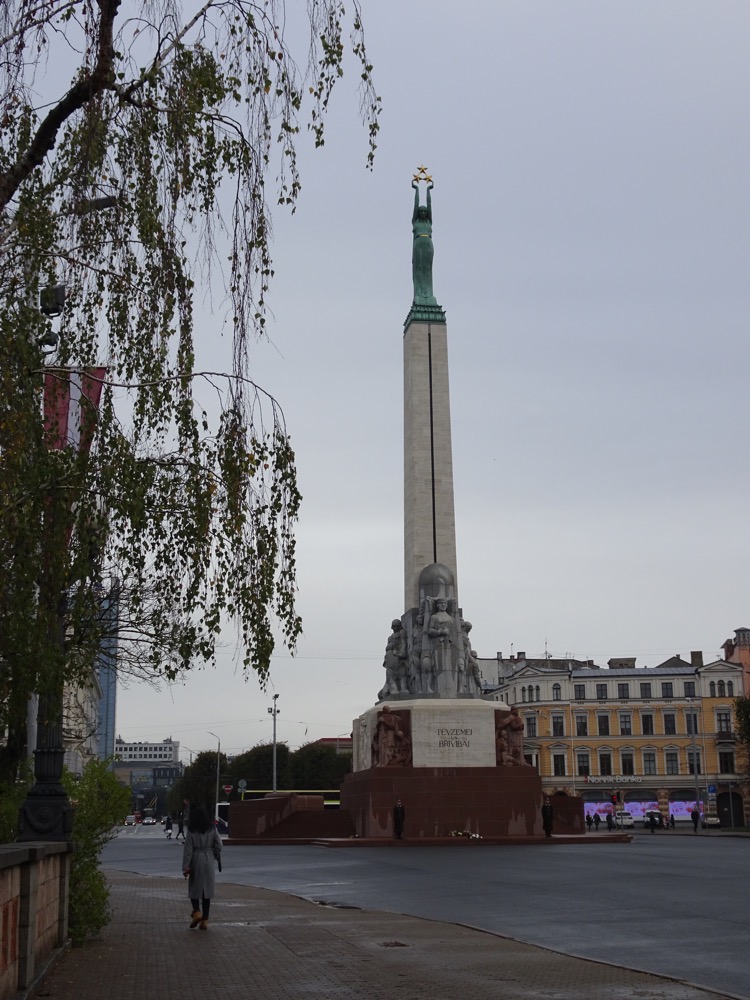 In the 1940s the Soviet Union authorities considered demolishing the monument, but thankfully the concept was never enacted. The original sculptor was a Soviet, named Vera Mukhina and some claim she personally saved the monument by convincing authorities of its purely artistic merit. is sometimes credited for rescuing the monument, because she considered it to be of high artistic value. In the ’60s, the idea of demolishing it came up again – but was fortunately dismissed by Soviet authorities as they recognised that the action would have deepened the indignation and tension that existed in Latvian society towards the Soviets. Instead, the Soviet attempted to alter the symbolic meaning of the monument by imbuing it with Communist ideology, but the propaganda campaign failed and it retained its symbolism of national independence to the general public. We happened to be along during the changing of the guard at midday.
In the 1940s the Soviet Union authorities considered demolishing the monument, but thankfully the concept was never enacted. The original sculptor was a Soviet, named Vera Mukhina and some claim she personally saved the monument by convincing authorities of its purely artistic merit. is sometimes credited for rescuing the monument, because she considered it to be of high artistic value. In the ’60s, the idea of demolishing it came up again – but was fortunately dismissed by Soviet authorities as they recognised that the action would have deepened the indignation and tension that existed in Latvian society towards the Soviets. Instead, the Soviet attempted to alter the symbolic meaning of the monument by imbuing it with Communist ideology, but the propaganda campaign failed and it retained its symbolism of national independence to the general public. We happened to be along during the changing of the guard at midday.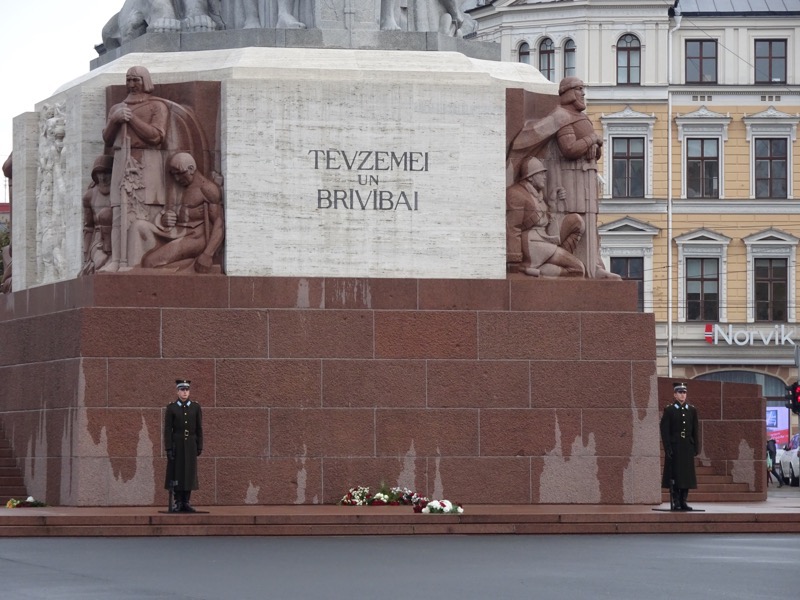 And what I said about those poor Nonnas selling their knitted goods in the tents at the market goes double for these poor soldiers who are standing dead still at their post until relieved. It is way too cold to be not moving about.
And what I said about those poor Nonnas selling their knitted goods in the tents at the market goes double for these poor soldiers who are standing dead still at their post until relieved. It is way too cold to be not moving about.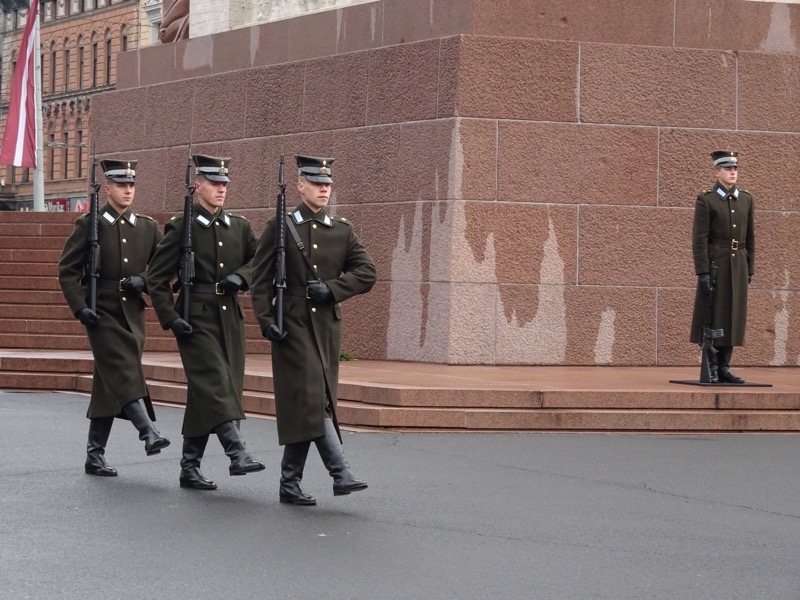
Just past the Freedom Monument is the National History Museum of Latvia, which promised to house all sorts of wonderful medieval Baltic artefacts. Riga is situated on the Daugava River which has been a trade route since forever and was part of the Vikings primary navigation routes to the Byzantine Empire. The Daugava was settled as early as the 2nd century and had several tribes in the region including the Livs and the ancient Finnic tribes. Riga was a major centre of Viking trade during the early Middle Ages – most of the people who lived in the region were fishermen, farmers and traders – trading craft works made of bone, wood, amber and iron. Evidence demonstrates that Riga was a going port well up until the 12th century when German traders began to dominate the area… so I was really looking forward to the museum.
Unfortunately, however, a good deal of the information available in the museum was not in English and as much as I wish I had dedicated myself to learning Latvian over the last few years (???), I have not. Which means that I saw some amazing artefacts here that I am keen to share with all our medieval friends, it is, however, going to take a considerable amount of time to decipher what is what – especially when on some cabinets all they gave me was ‘Brooches from the 2nd century to the 14th century’. Ho-hum.
Highlights were definitely the dress accessories, jewellery items and some beautiful reconstructed full outfits from extant pieces. So many more photos to follow when I can figure out some cohesive manner to present them in…
The War Museum is located in this tower, though to be honest, I am not sure which war they are referring to – there have been so many that have affected this region. Riga started out as a bishopric after some dude named Bishop Albert gained a papal bull stating that Riga is a Christian province/state? Nice power play that. After that the Polish, the Swedish, the Germans, the Prussians, the Russians and god knows who else have been in charge here before Latvia gained true independence. I’m a little bit ‘warred out’ these days – and we are likely to be getting into more WWII stuff tomorrow so decided to pass the War Museum to go find the Cat House.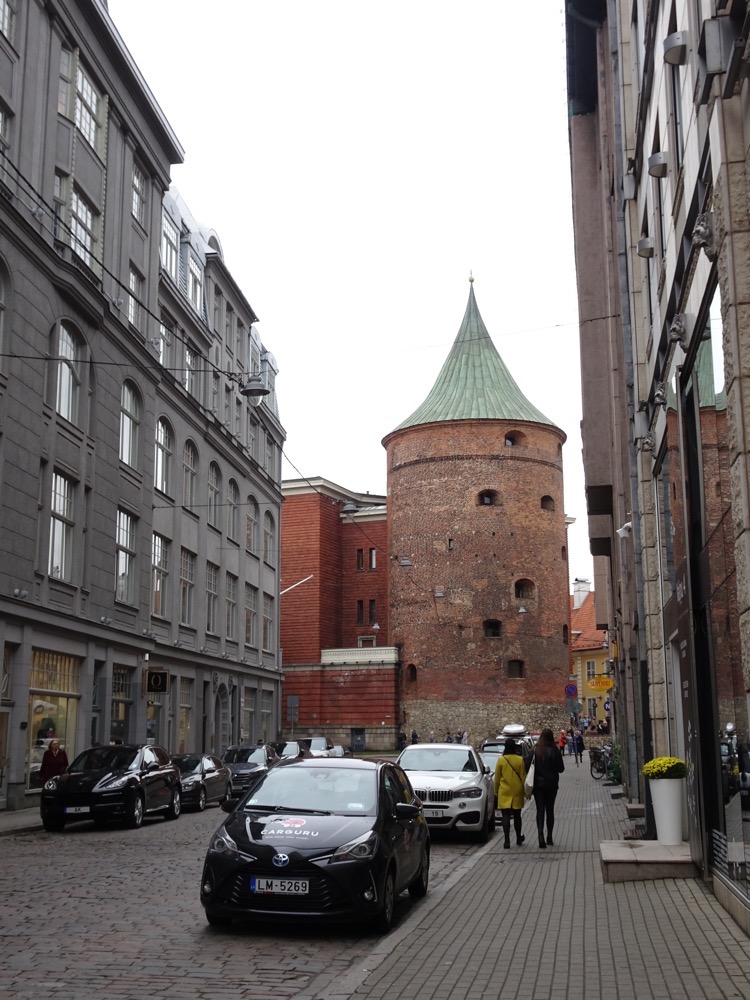 The Cat House (no, not that sort of cathouse) was built in 1909 in what is a unique medieval style but with some obvious Art Nouveau design elements (have a look at the door frame for example). The house is most well known for its two cat sculptures that are perched on the roof. The legend claims that the original owner/builder of the house wanted the cats to be placed with their arses turned towards the house of the Great Guild – who had apparently snubbed him as a member. Instead, the cats on the turrets actually face the Great Guild Hall which demonstrates quite adequately the extent of the power the guilds held over the craftsmen and tradesmen at the time… screw the client, do what we want.
The Cat House (no, not that sort of cathouse) was built in 1909 in what is a unique medieval style but with some obvious Art Nouveau design elements (have a look at the door frame for example). The house is most well known for its two cat sculptures that are perched on the roof. The legend claims that the original owner/builder of the house wanted the cats to be placed with their arses turned towards the house of the Great Guild – who had apparently snubbed him as a member. Instead, the cats on the turrets actually face the Great Guild Hall which demonstrates quite adequately the extent of the power the guilds held over the craftsmen and tradesmen at the time… screw the client, do what we want.
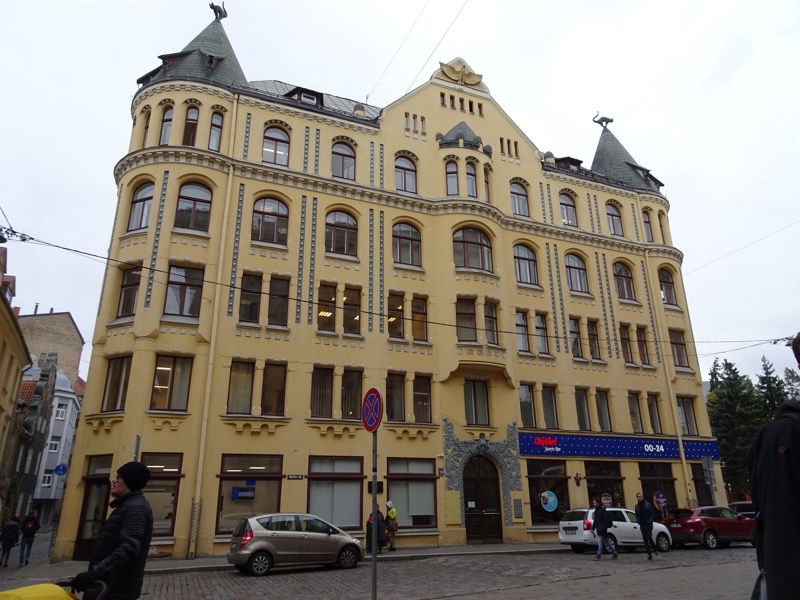
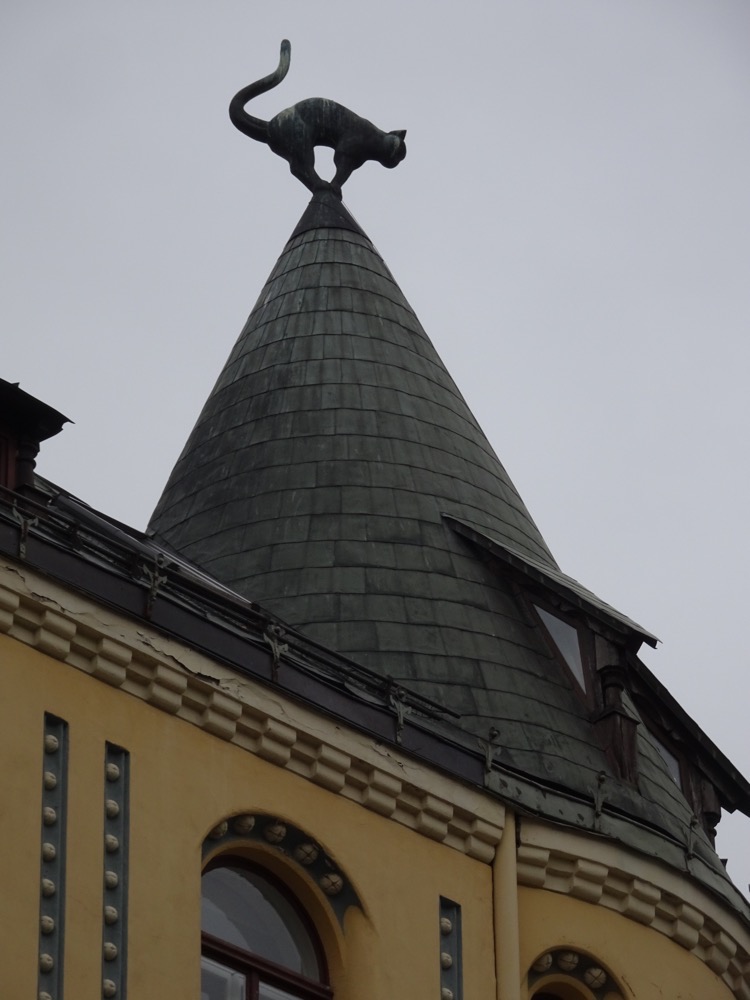 Weird how two little cat statues can sort of take over the entire town’s imagination. There are Fat Cat cafes and Black Cat restaurants, and of course more cat stuff than you can poke a stick at in the local souvenir stores.
Weird how two little cat statues can sort of take over the entire town’s imagination. There are Fat Cat cafes and Black Cat restaurants, and of course more cat stuff than you can poke a stick at in the local souvenir stores.
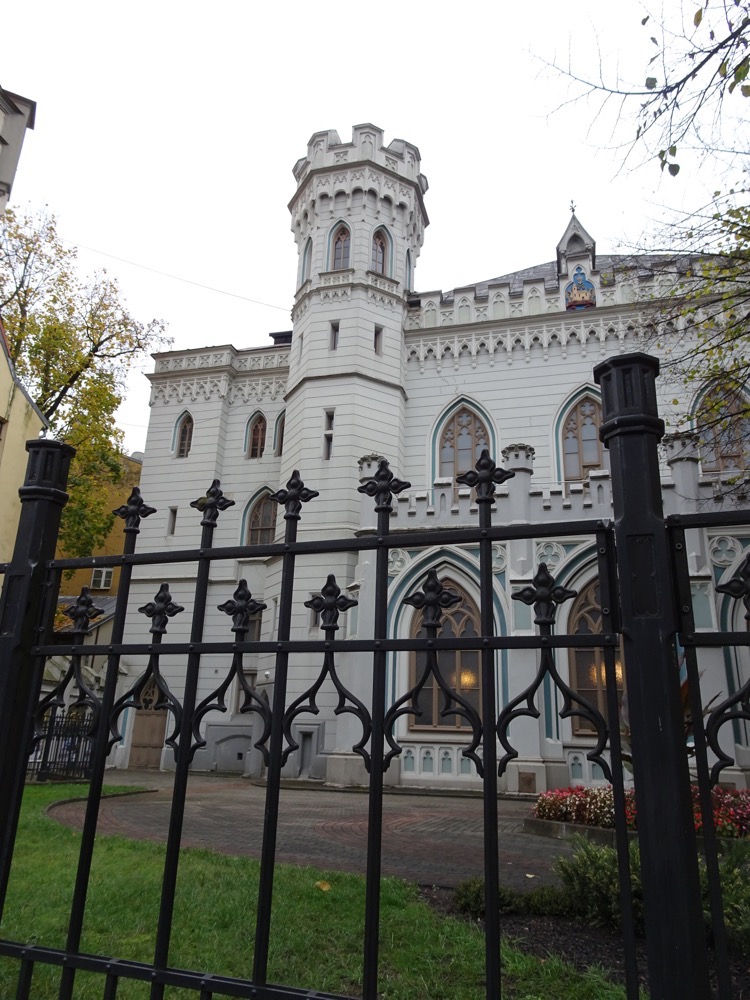
Lunch time we kinda went out on a limb and tried a local canteen. It was supercheap student type fare. Massive bowls of soup for €2 and dumplings paid for by weight.
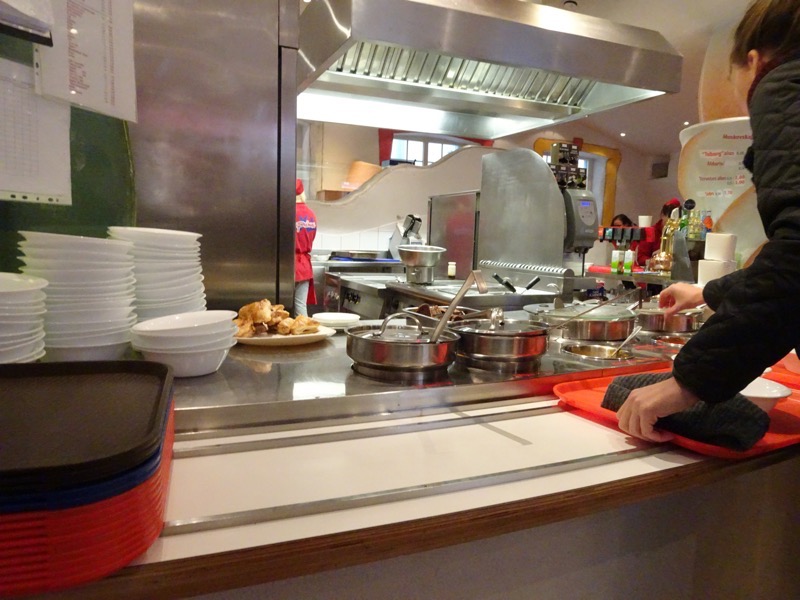
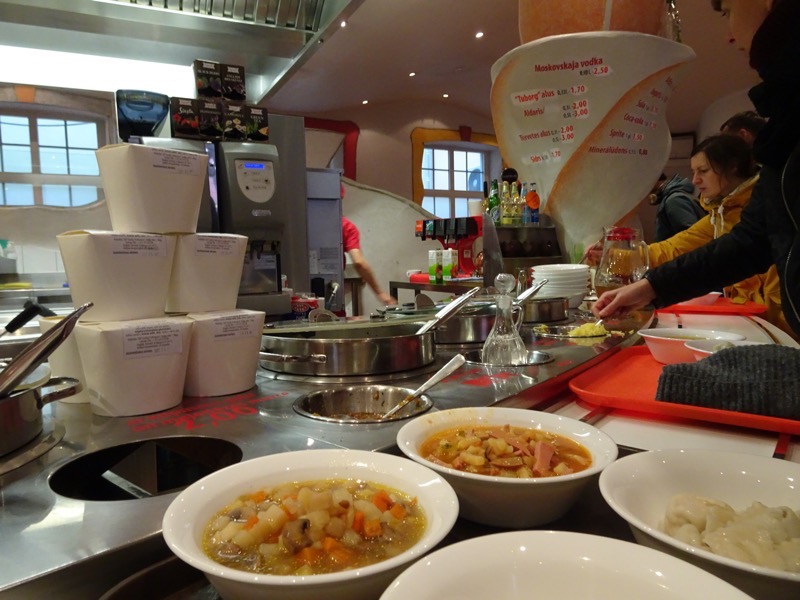 Lunch was hot and salty. That’s all I got. It was edible but not great.
Lunch was hot and salty. That’s all I got. It was edible but not great.
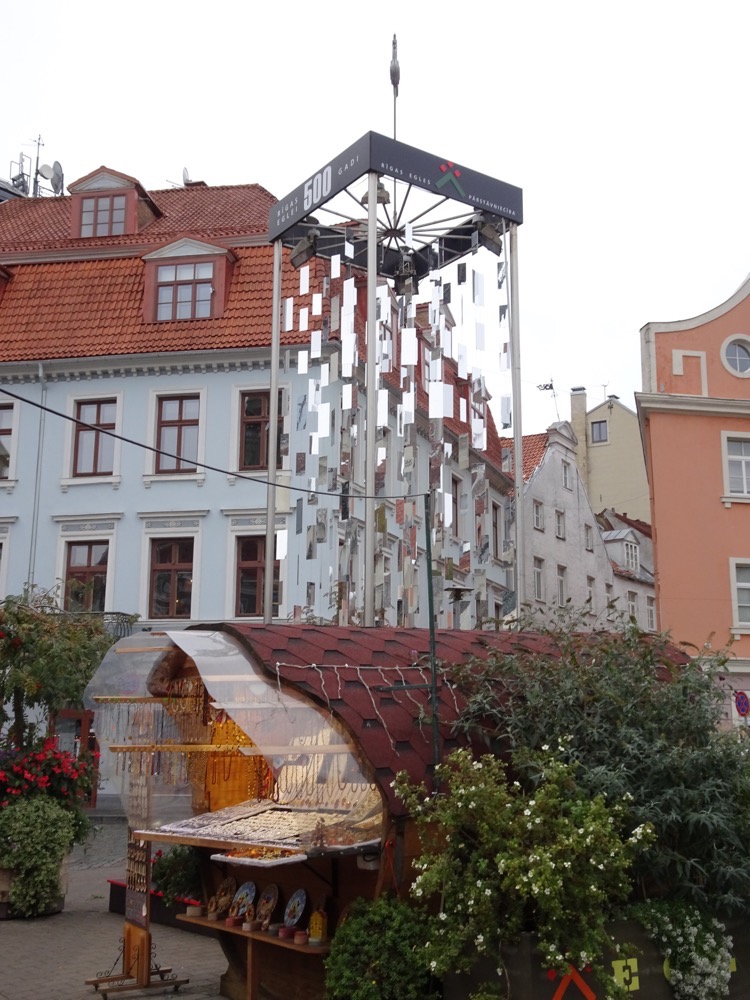 After lunch we continued our exploration of the Old Town looking for the Three Brothers and the Riga Cathedral.
After lunch we continued our exploration of the Old Town looking for the Three Brothers and the Riga Cathedral.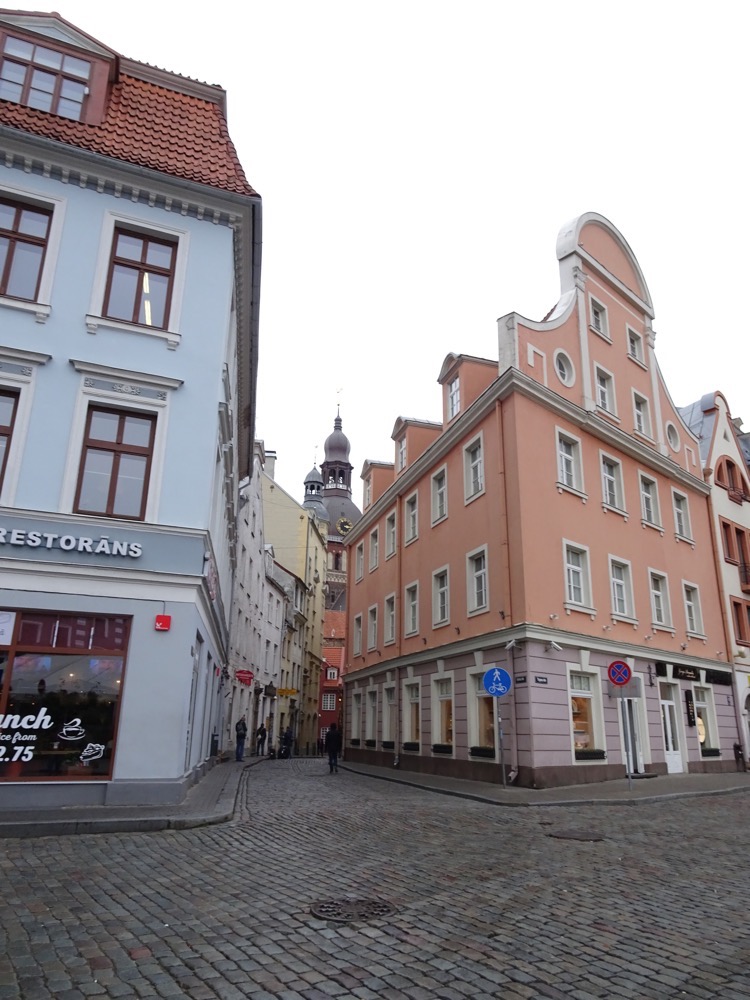 Around every corner was another cute little building or a quaint little restaurant or historical house. Made me realise that you never trip over tourists taking photos in my home town, but it happens in places like this all the time. Does Brisbane even have architecture that foreigners think are worth photographing?
Around every corner was another cute little building or a quaint little restaurant or historical house. Made me realise that you never trip over tourists taking photos in my home town, but it happens in places like this all the time. Does Brisbane even have architecture that foreigners think are worth photographing?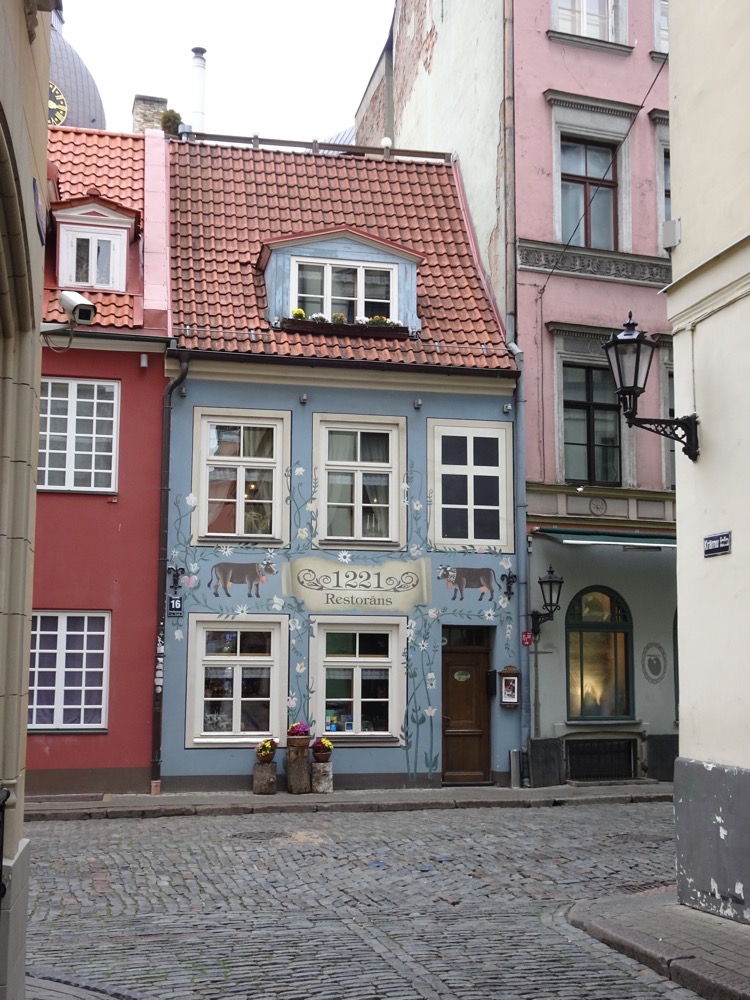
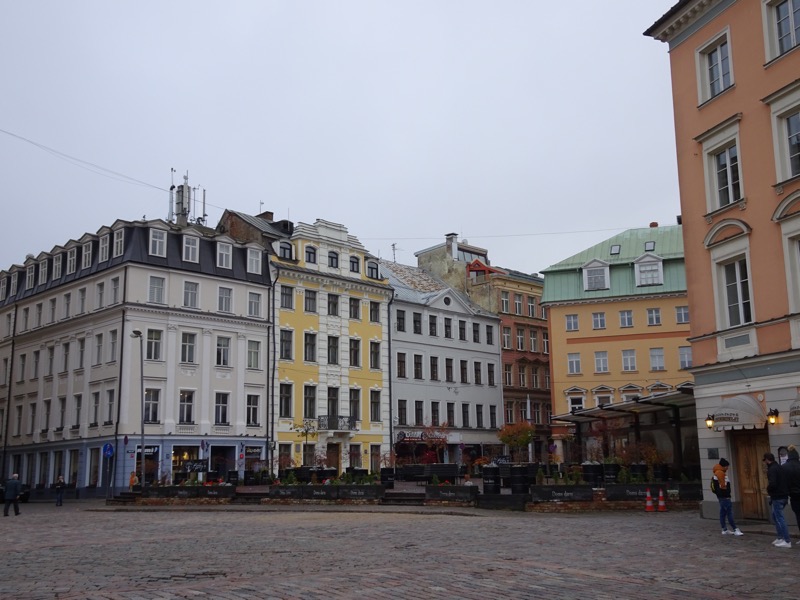 Anyway, we found the Riga Cathedral which is the main Evangelical Lutheran cathedral in Riga and has been the seat of the Archbishop of Riga since Bishop Albert made the city into a Christian state as I mentioned earlier. The cathedral is one of the most recognizable landmarks in the entire country and often ends up on all the Latvia travel catalogues etc. It is also well known for its weathercock (which now resides inside the church).
Anyway, we found the Riga Cathedral which is the main Evangelical Lutheran cathedral in Riga and has been the seat of the Archbishop of Riga since Bishop Albert made the city into a Christian state as I mentioned earlier. The cathedral is one of the most recognizable landmarks in the entire country and often ends up on all the Latvia travel catalogues etc. It is also well known for its weathercock (which now resides inside the church). 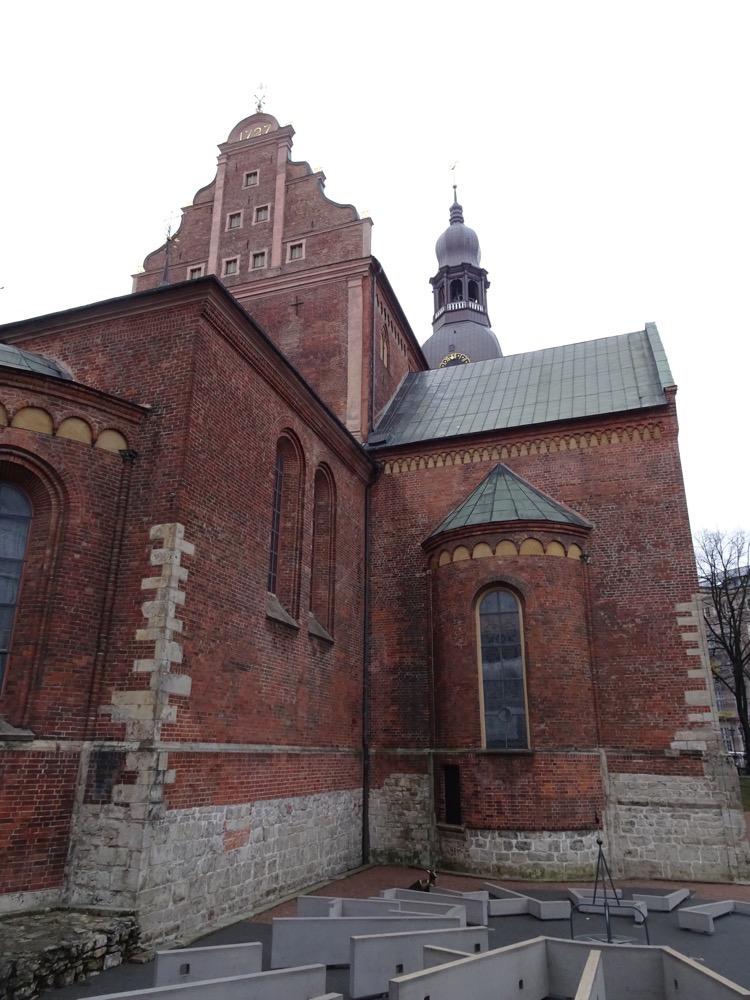 The church is also called Dome Cathedral, which I found vaguely amusing as the world ‘Dome’ comes from the German ‘Dom’, meaning, wait for it, ‘cathedral’. So it’s commonly called the Cathedral Cathedral. Tautologies ahoy.
The church is also called Dome Cathedral, which I found vaguely amusing as the world ‘Dome’ comes from the German ‘Dom’, meaning, wait for it, ‘cathedral’. So it’s commonly called the Cathedral Cathedral. Tautologies ahoy.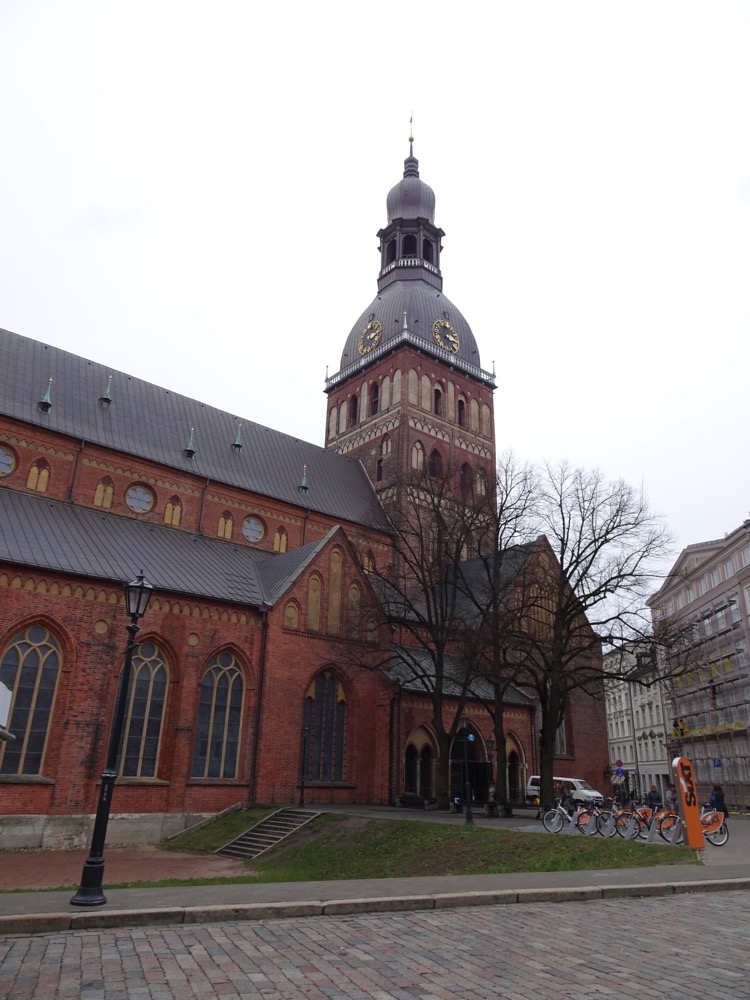 I loved this door and thought it was a mighty impressive entrance, only to discover we were entering through the peasants’ side entrance, and there is another larger door to our right somewhere.
I loved this door and thought it was a mighty impressive entrance, only to discover we were entering through the peasants’ side entrance, and there is another larger door to our right somewhere.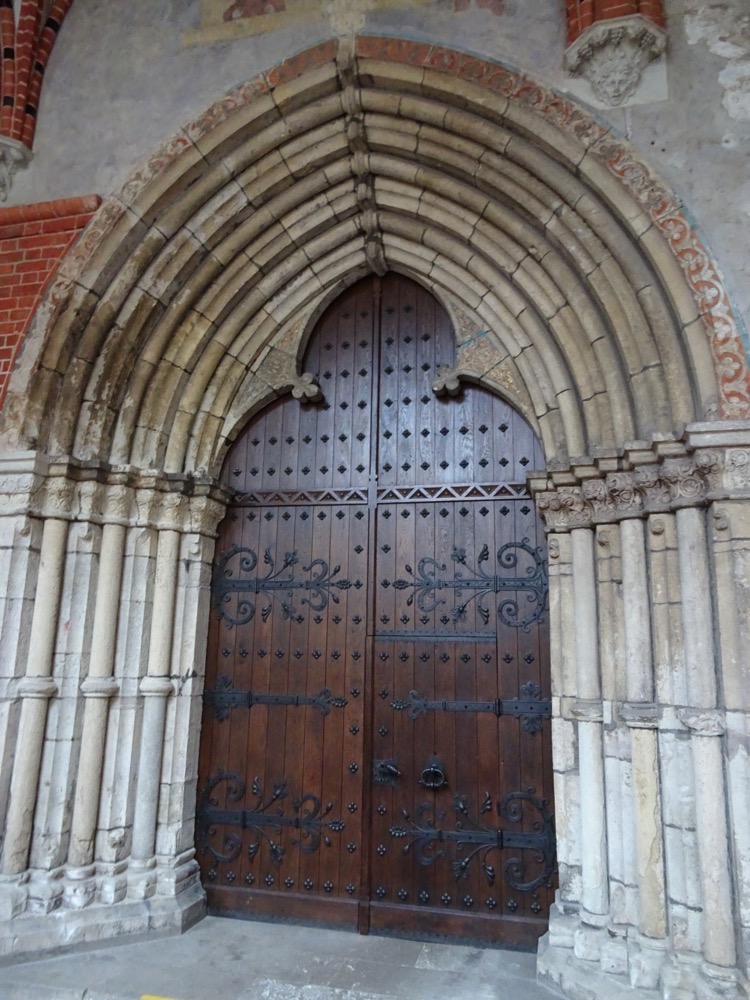 The church was built near the River Daugava in 1211 by Bishop Albert of Riga, who originally came from Lower Saxony. It is considered the largest medieval church in the Baltic states and of course has undergone many modifications over the course of its 800 year history.
The church was built near the River Daugava in 1211 by Bishop Albert of Riga, who originally came from Lower Saxony. It is considered the largest medieval church in the Baltic states and of course has undergone many modifications over the course of its 800 year history.
Some bronze Landsknechts dudes guard the staircase that leads up to the organ.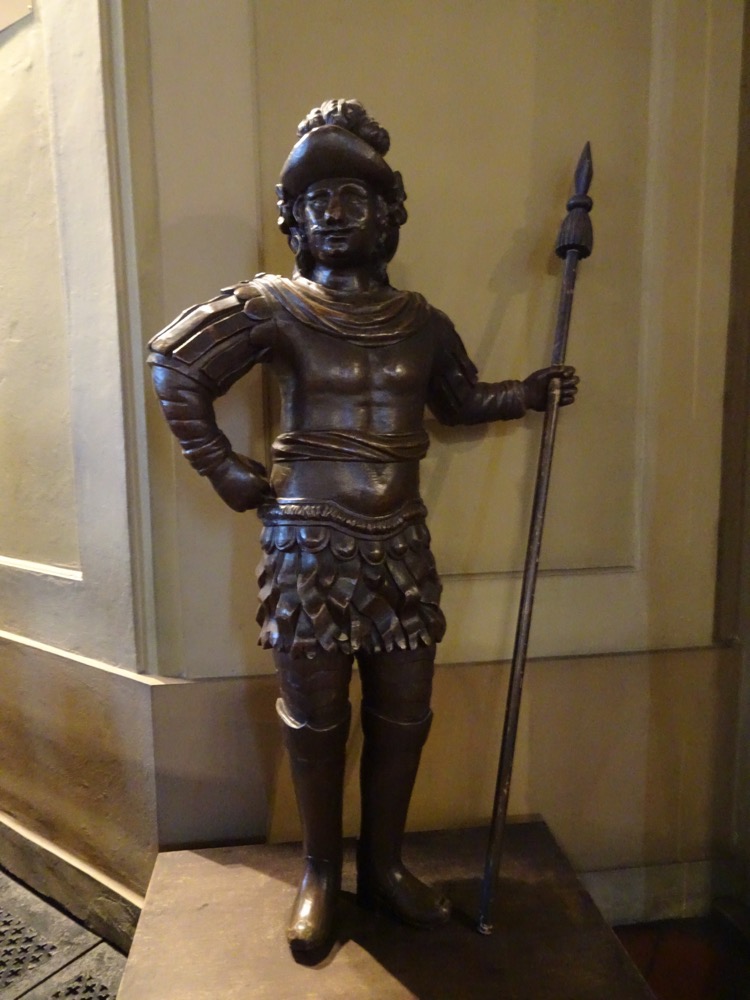 Like most Lutheran churches, this one was somewhat austere and sparse in its decorative motifs and not as over the top as a Catholic or Orthodox cathedral.
Like most Lutheran churches, this one was somewhat austere and sparse in its decorative motifs and not as over the top as a Catholic or Orthodox cathedral. 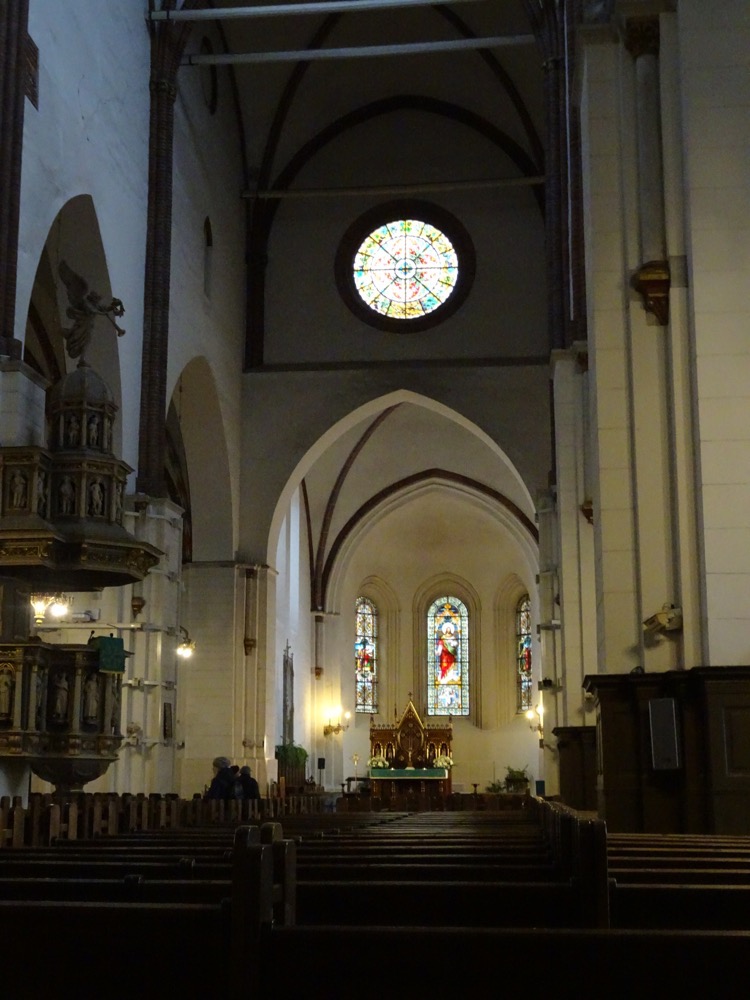
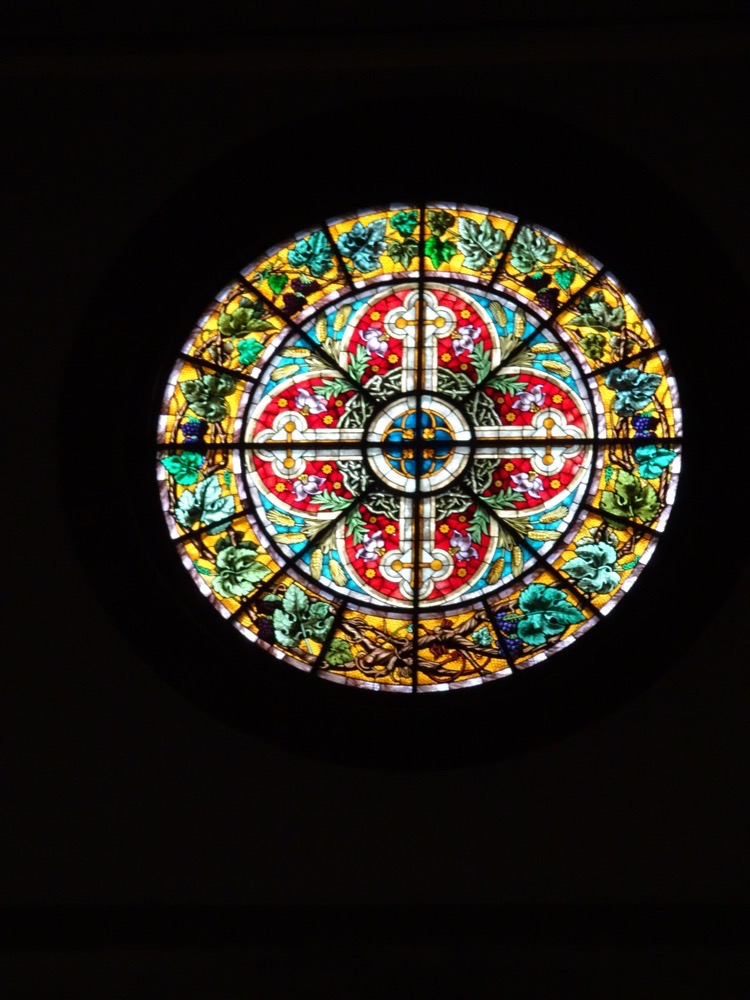 The choir loft:
The choir loft: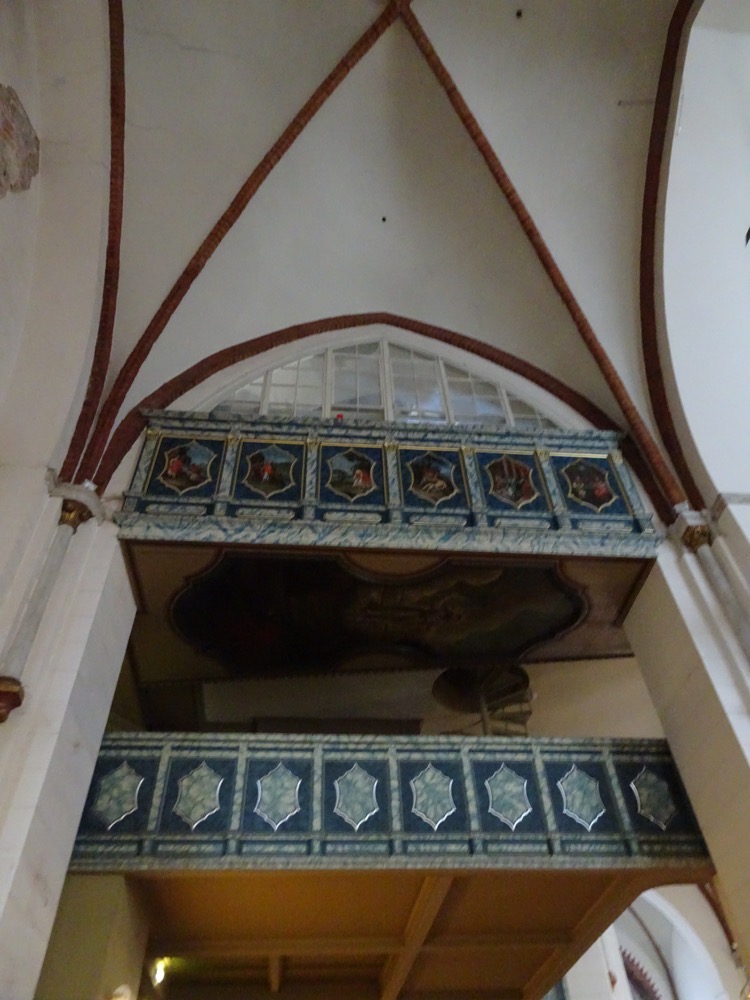
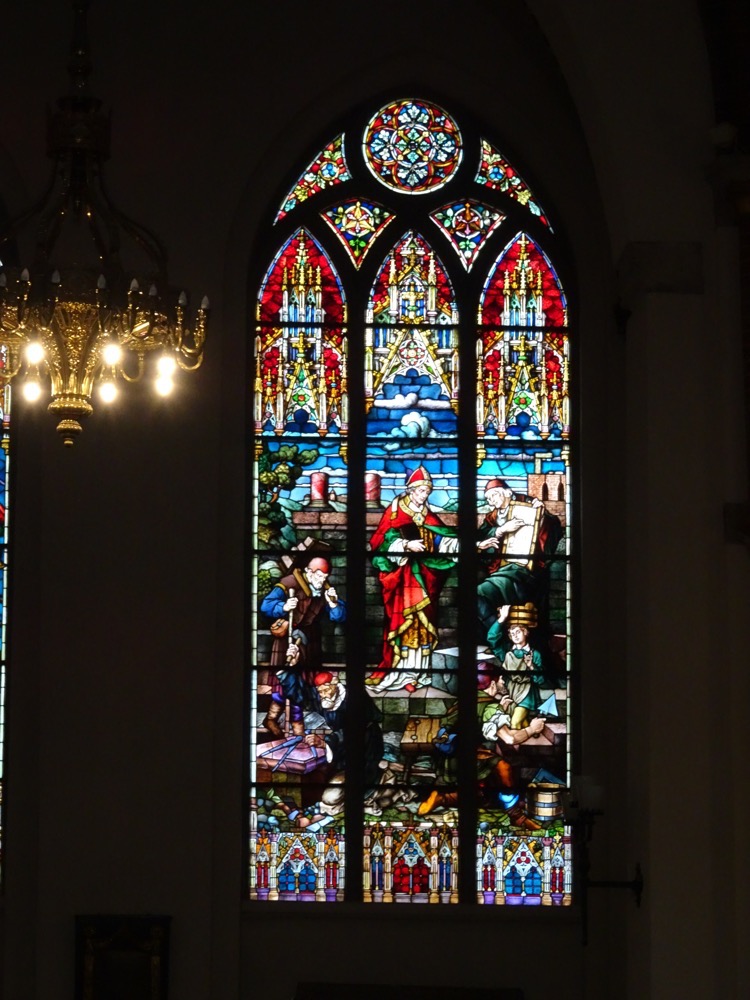
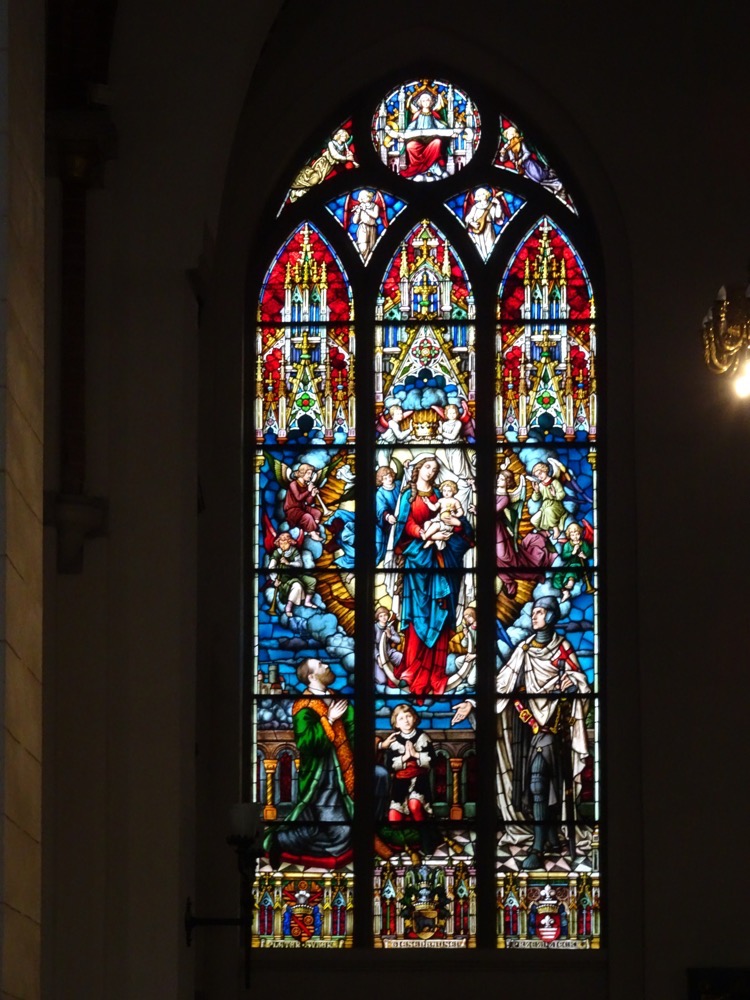 I have been unable to find out anything on when these stained glass windows were actually made. There have been renovations in the cathedral following fires in the 13th and 16th centuries and following wars in the 17th, 18th centuries and of course post the World Wars and Soviet occupations of the 20th century. For all I can tell, these may have been recreated in the last decade – they are certainly vibrant and detailed enough..?
I have been unable to find out anything on when these stained glass windows were actually made. There have been renovations in the cathedral following fires in the 13th and 16th centuries and following wars in the 17th, 18th centuries and of course post the World Wars and Soviet occupations of the 20th century. For all I can tell, these may have been recreated in the last decade – they are certainly vibrant and detailed enough..?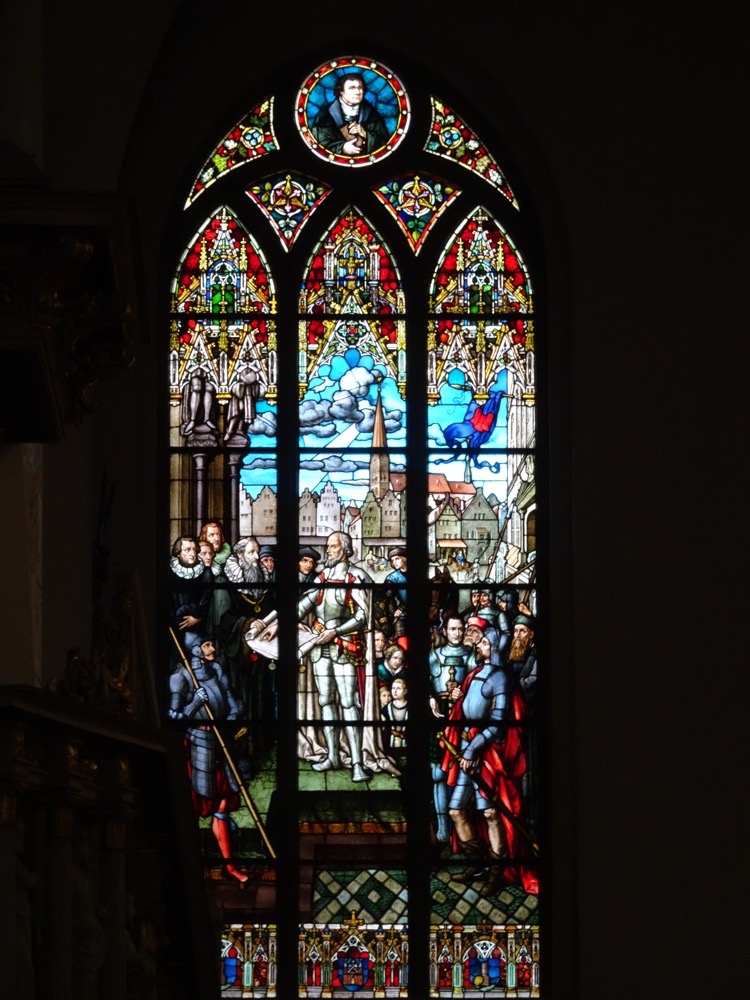
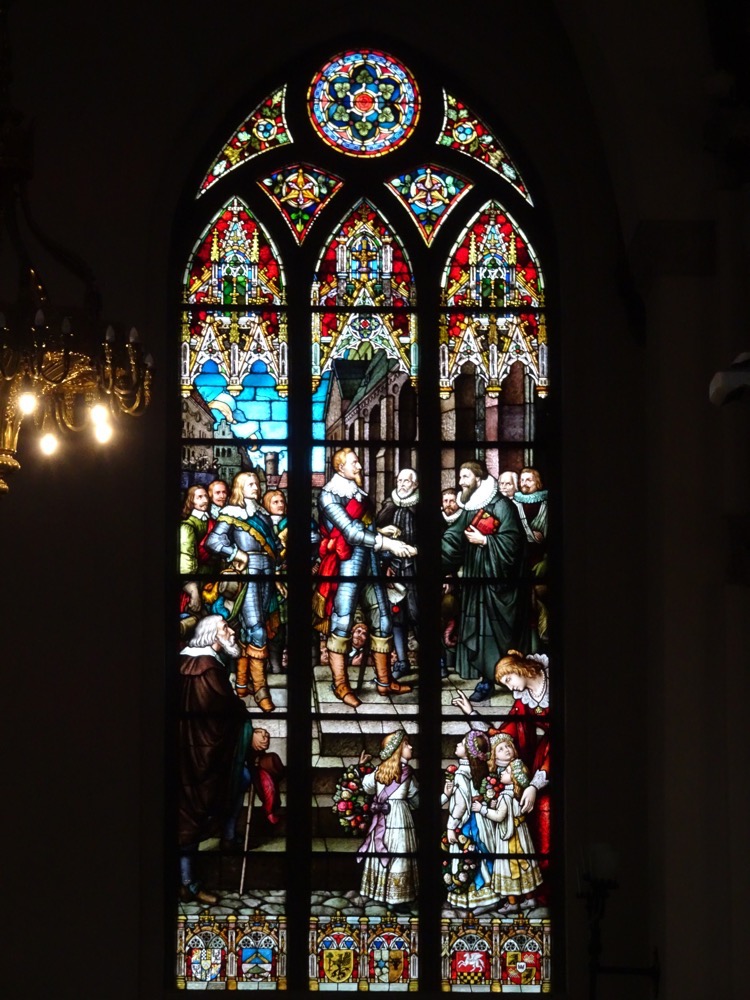 Weathercock
Weathercock
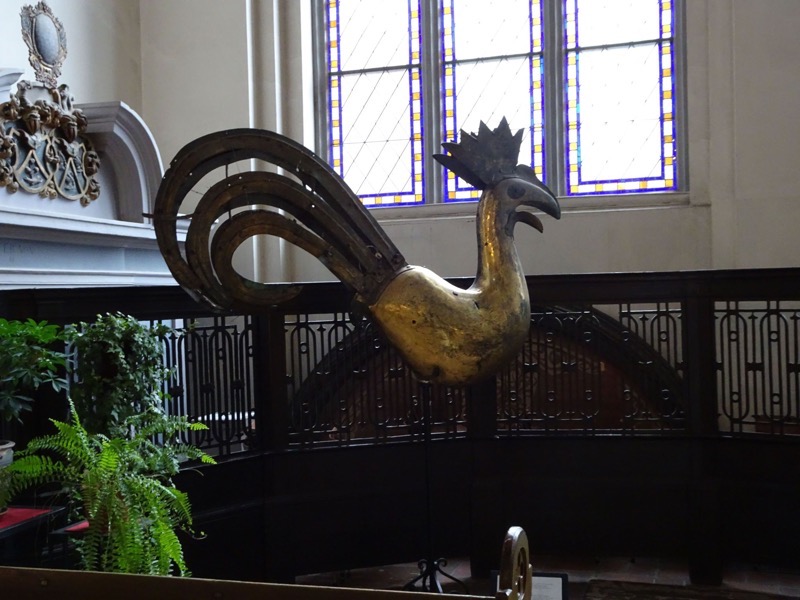
Religious services were completely prohibited here during the Soviet occupation from 1939 to 1989, and the cathedral was appropriated for use as a concert hall.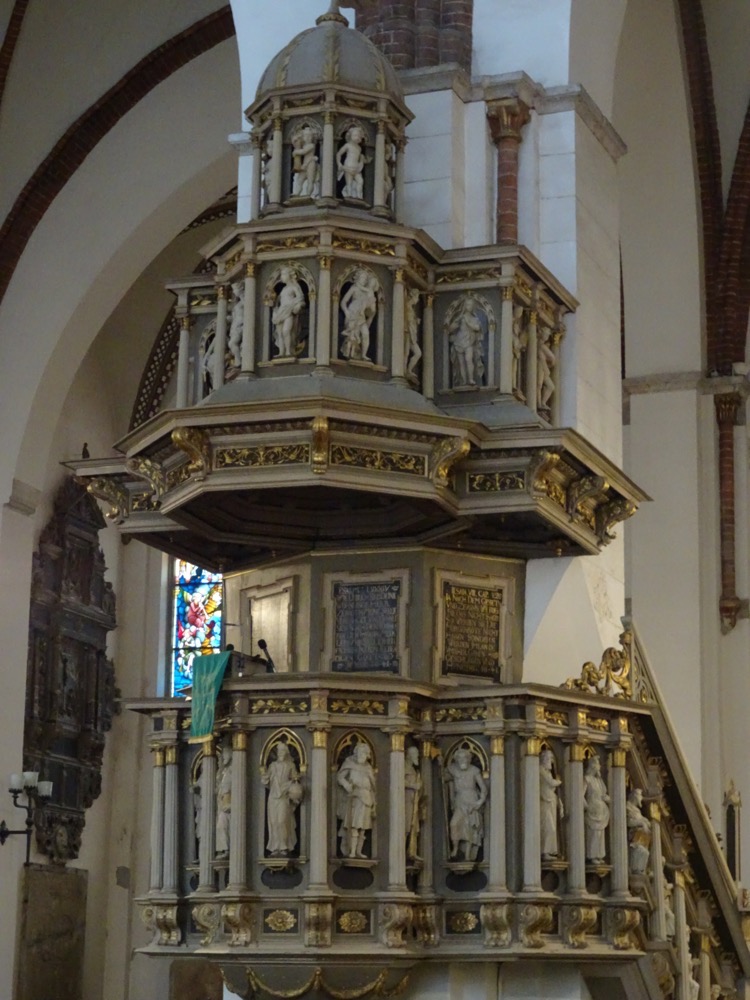
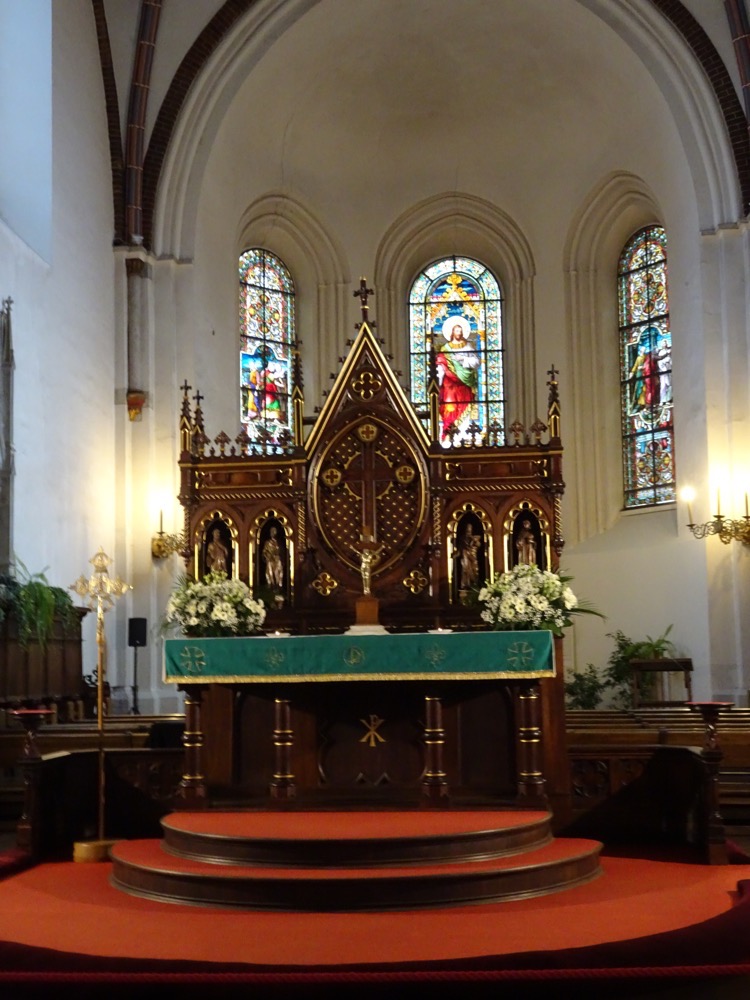 Riga Cathedral’s organ was built by E.F. Walcker & Sons of Ludwigsburg in 1882–83, It has four manuals and one pedalboard and plays 116 voices, 124 stops, 144 ranks, and has 6,718 pipes. It includes 18 combinations and General Crescendo… none of which means anything to me, but I heard someone playing it for a while when I was in here today and it could play the most delicate high notes that resonated around the cavernous cathedral as well as the lowest resonant notes that reverberated through your chest. Very cool!
Riga Cathedral’s organ was built by E.F. Walcker & Sons of Ludwigsburg in 1882–83, It has four manuals and one pedalboard and plays 116 voices, 124 stops, 144 ranks, and has 6,718 pipes. It includes 18 combinations and General Crescendo… none of which means anything to me, but I heard someone playing it for a while when I was in here today and it could play the most delicate high notes that resonated around the cavernous cathedral as well as the lowest resonant notes that reverberated through your chest. Very cool!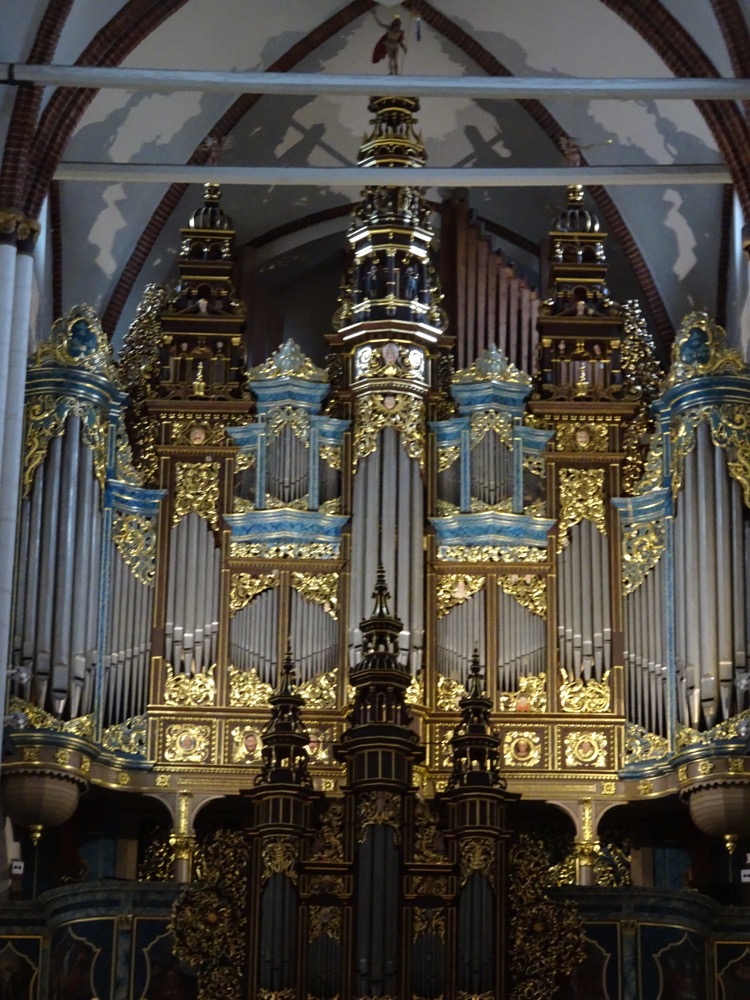
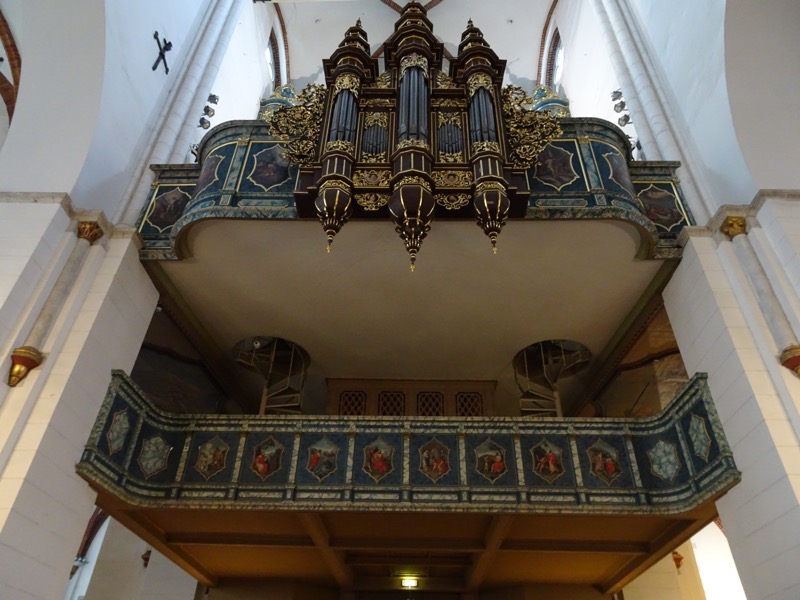 Bishop Albert’s cloistered courtyard:
Bishop Albert’s cloistered courtyard:
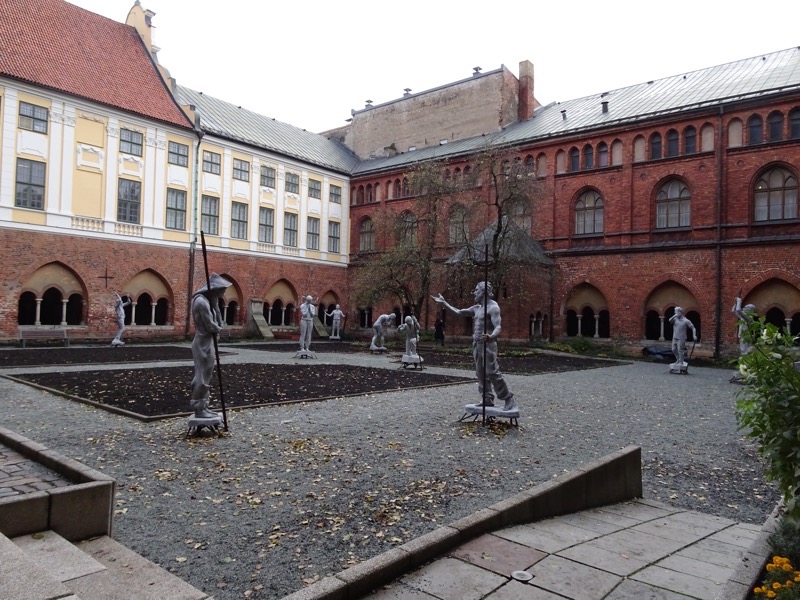 Around the cloisters were a collection of artefacts that seem to have been put here for storage? An older version of the tower clock face, pieces of carved stone and canons – lots of canons.
Around the cloisters were a collection of artefacts that seem to have been put here for storage? An older version of the tower clock face, pieces of carved stone and canons – lots of canons.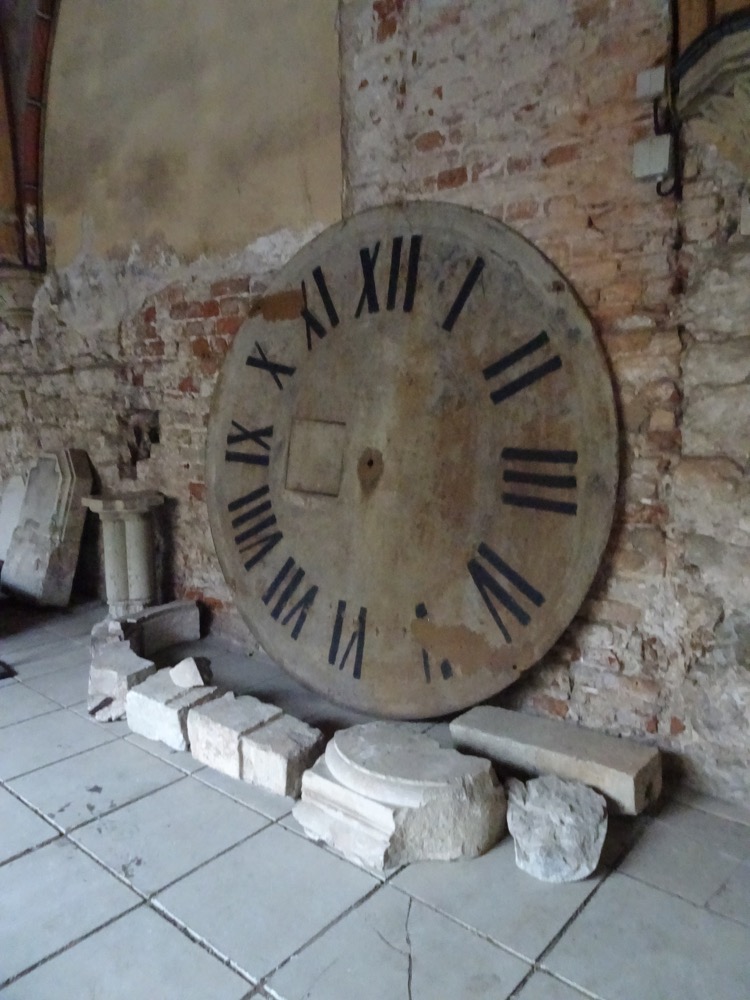
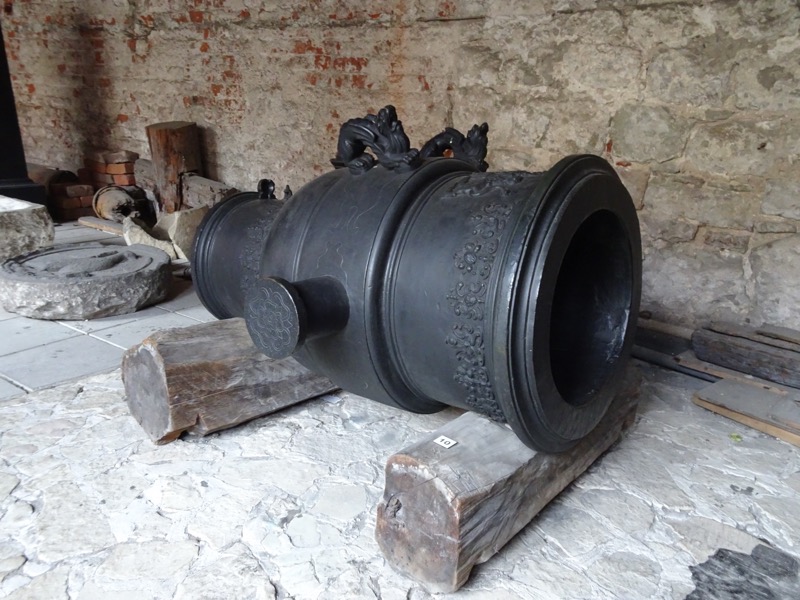
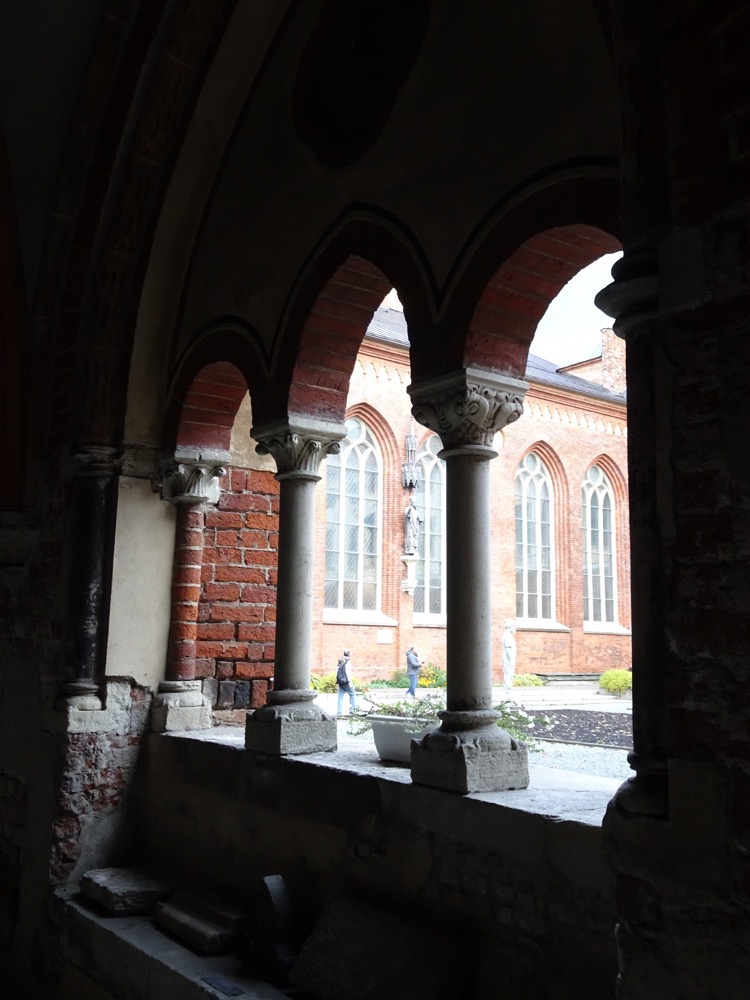
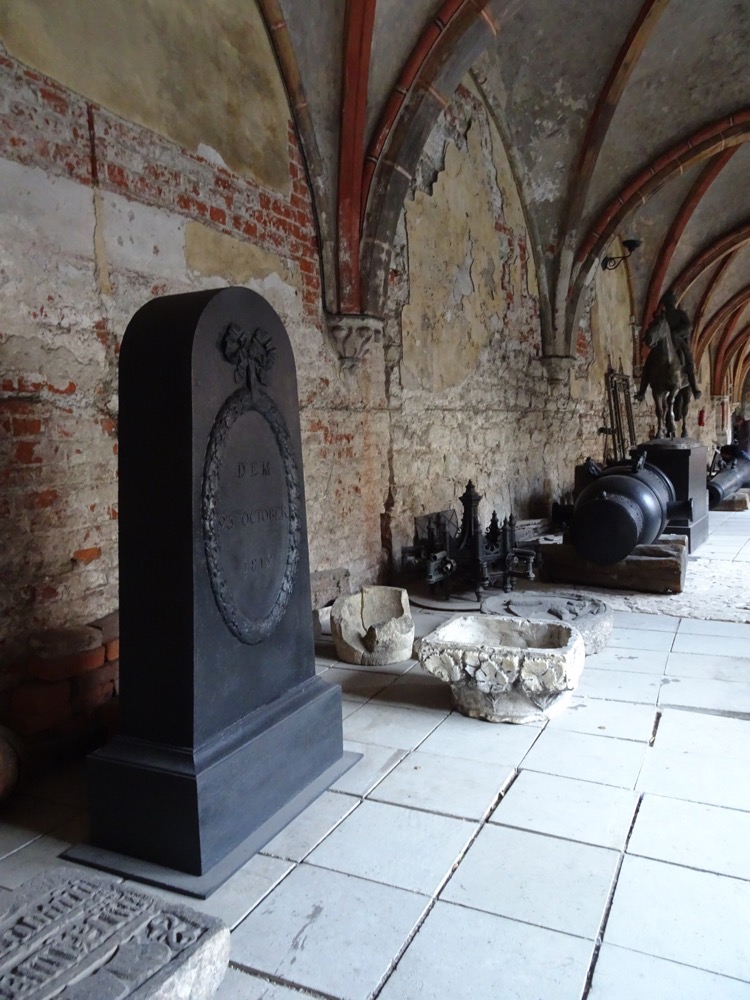
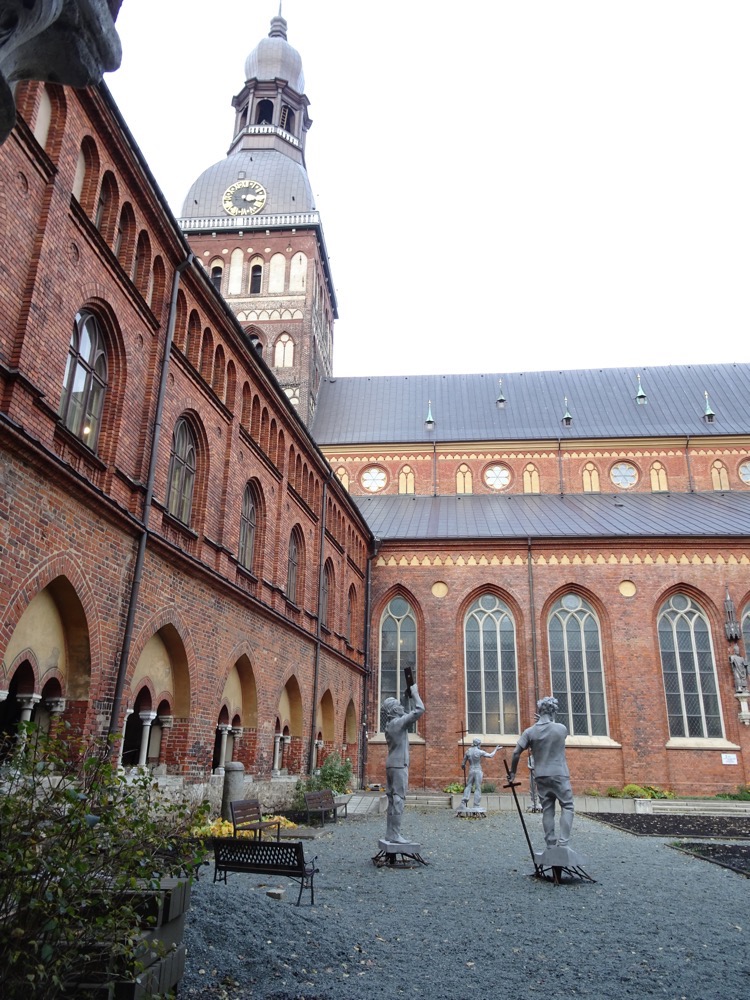 It was like the national musuems of Latvia said ‘We have no where to house all these 16th to 19th century canons, any ideas?’ and then some gardener scratched his beard and said ‘We could put them in the cloisters until summer’, and there they remained…?! Weird.
It was like the national musuems of Latvia said ‘We have no where to house all these 16th to 19th century canons, any ideas?’ and then some gardener scratched his beard and said ‘We could put them in the cloisters until summer’, and there they remained…?! Weird.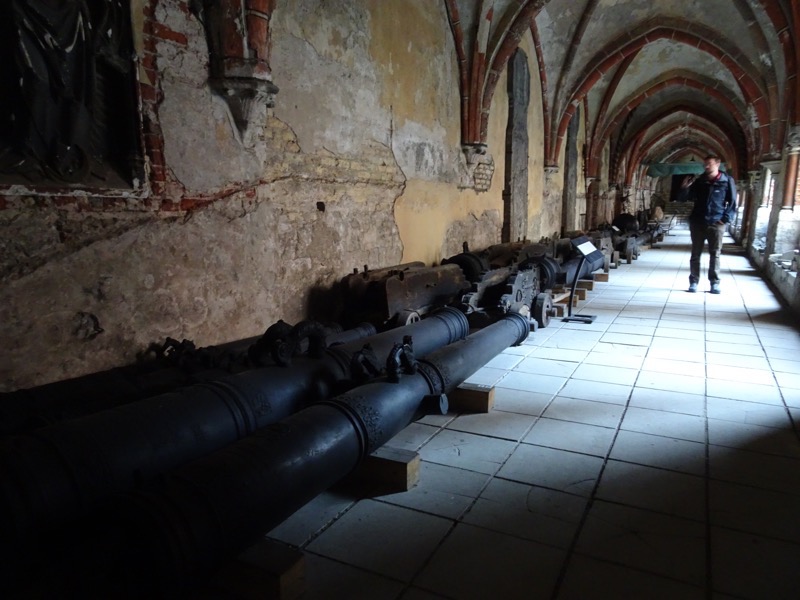
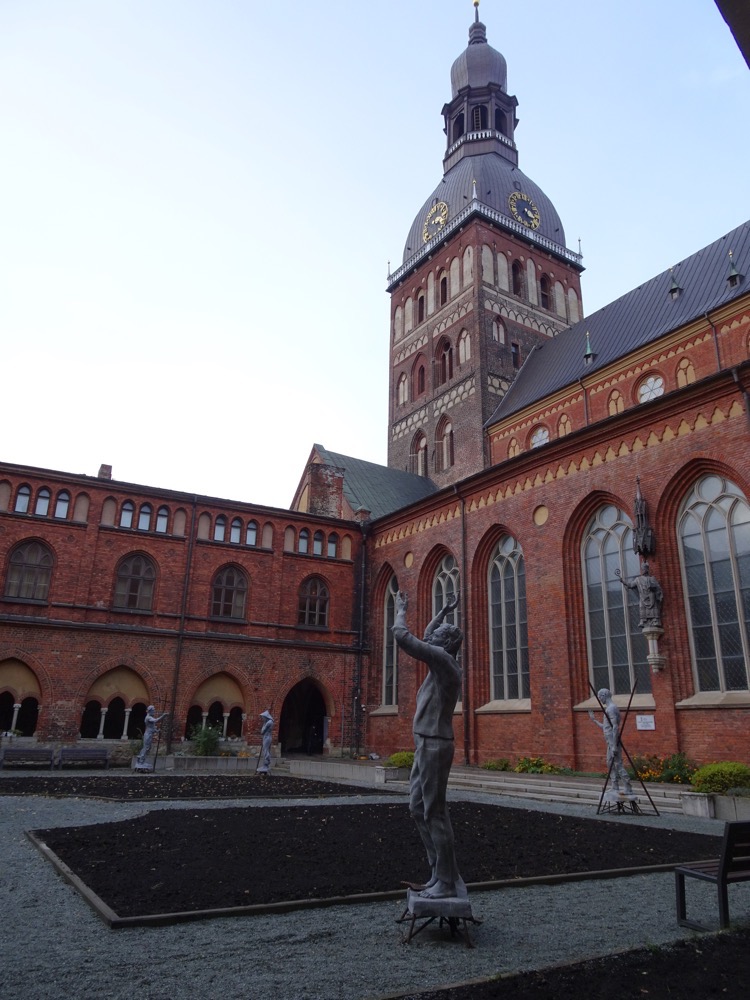 Bishop Albert.
Bishop Albert.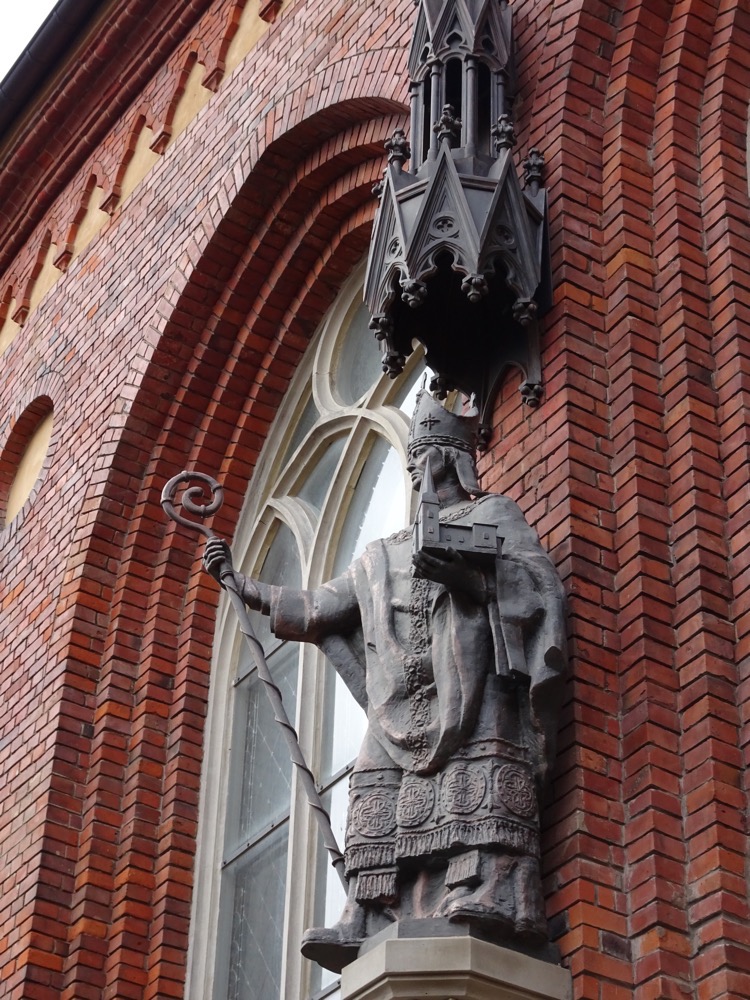
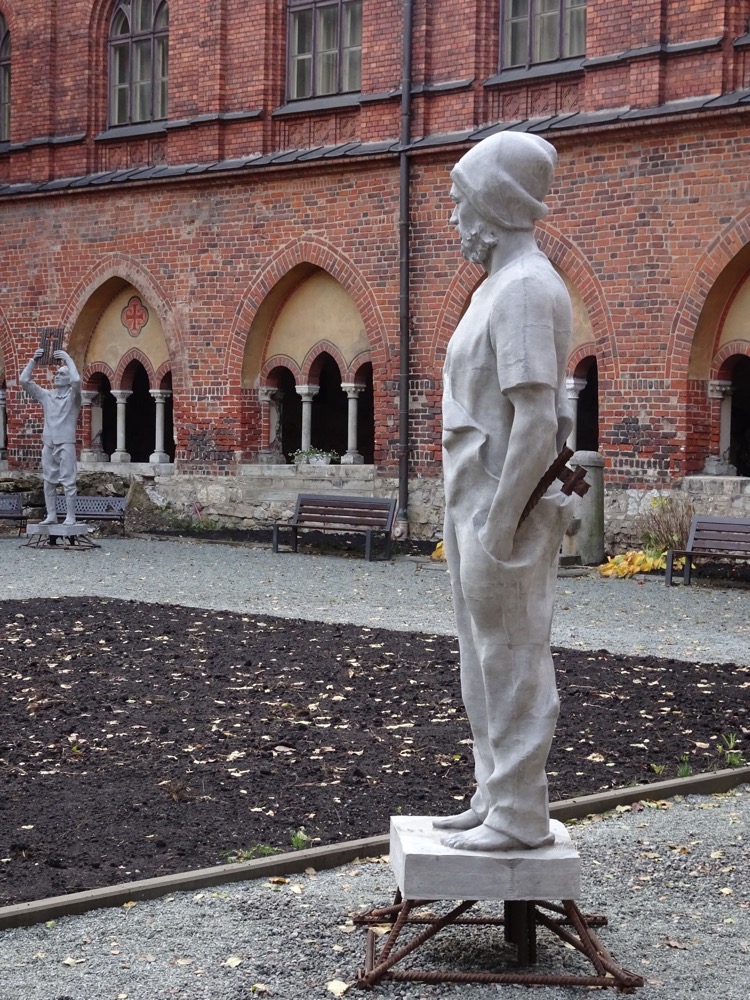
Dom Square: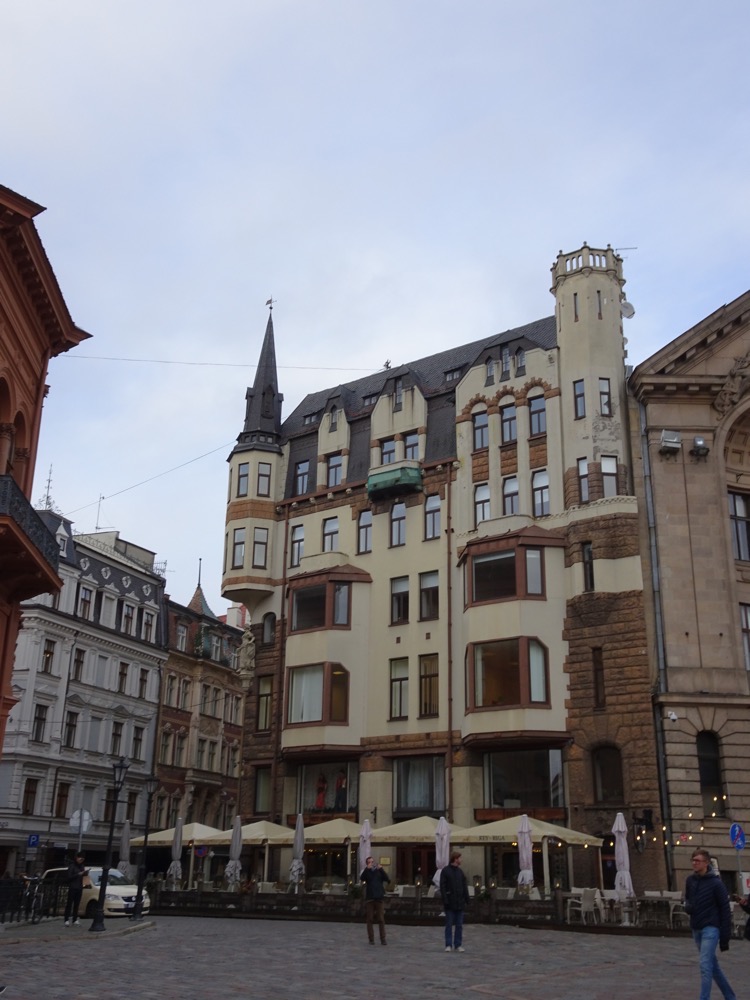
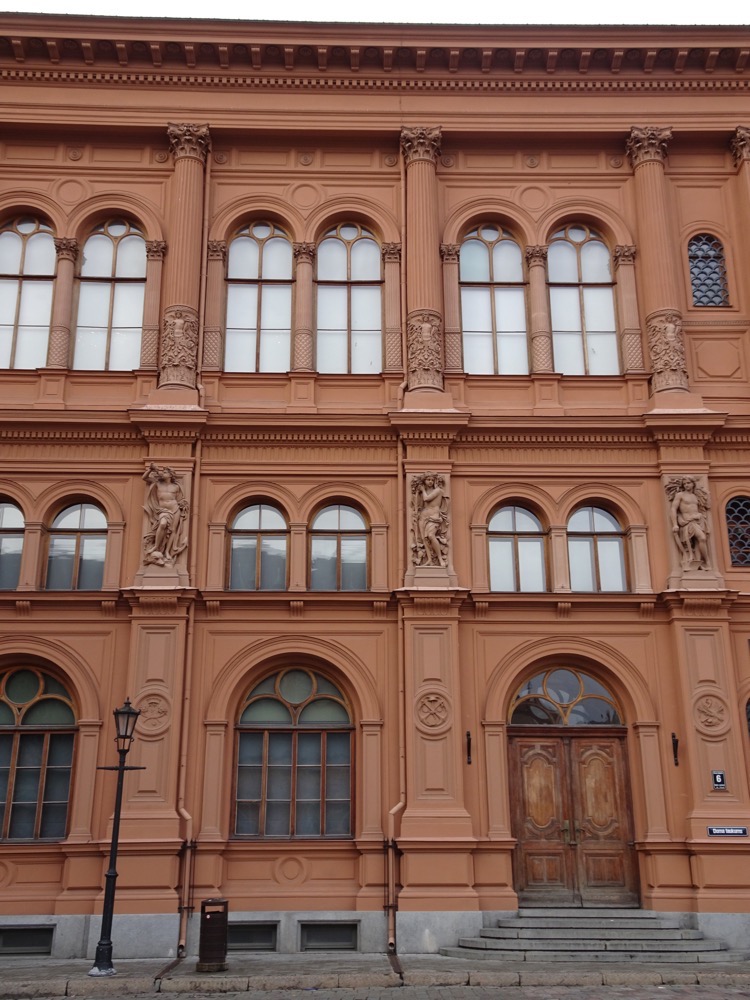
A little further on we found the Three Brothers…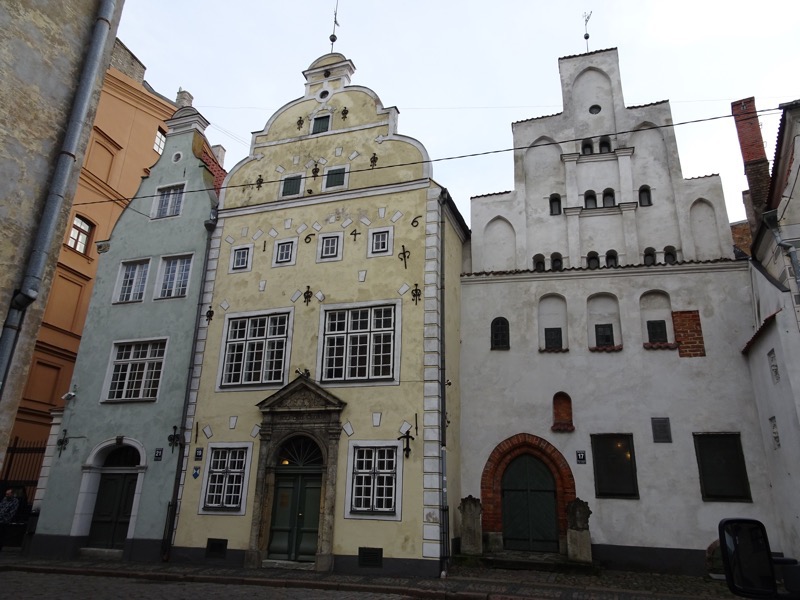
The Three Brothers is a building consisting of three conjoined dwellings in the Old Town. The houses form the oldest medieval complex of houses in Riga. oldest complex of dwelling houses in Riga. The houses are at 17, 19 and 21 Maza Pils Street (which amusingly is ‘Mazā Pils iela’ in Latvian, but the GPS can’t pronounce ‘iela’ and wil say ‘I-E-L-A’ every time it wants to say ‘street’.)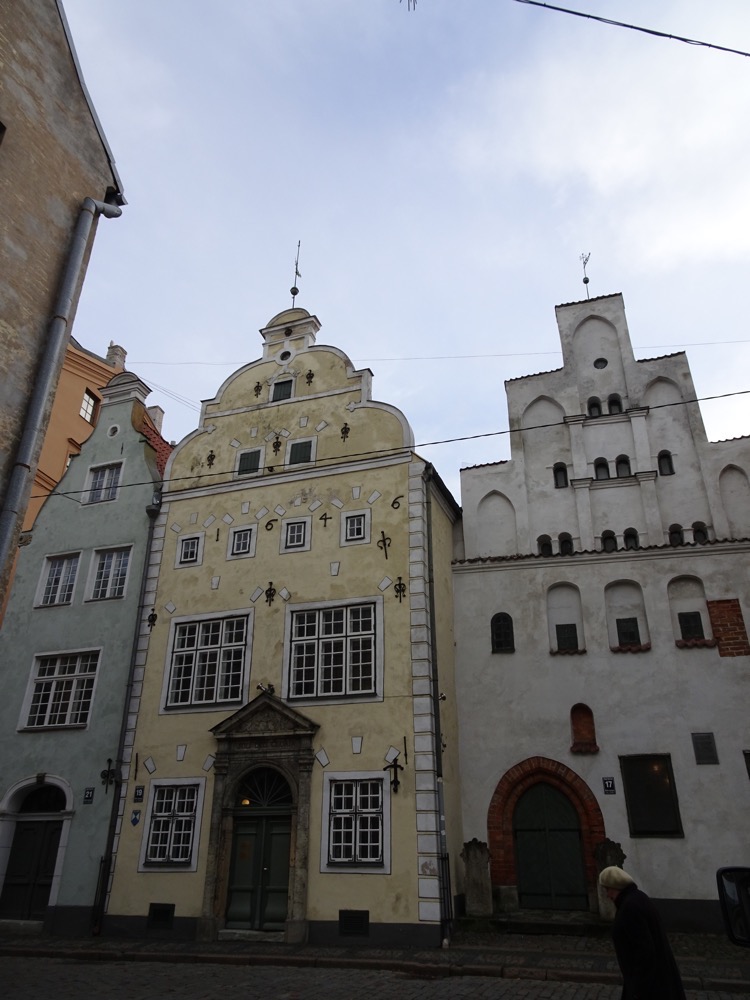
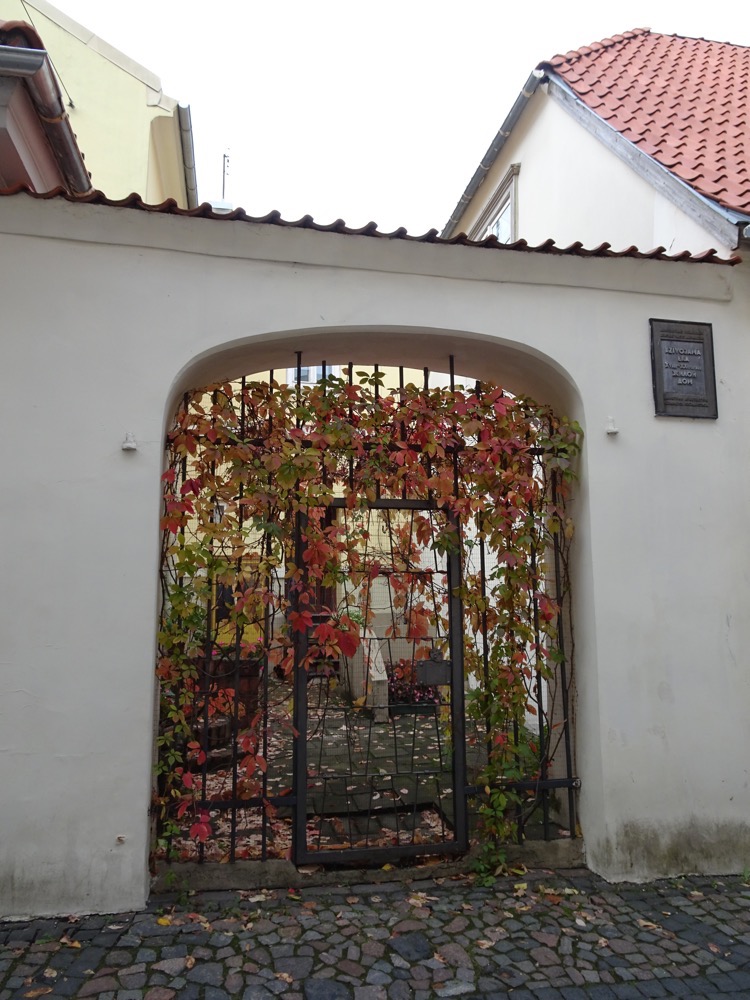
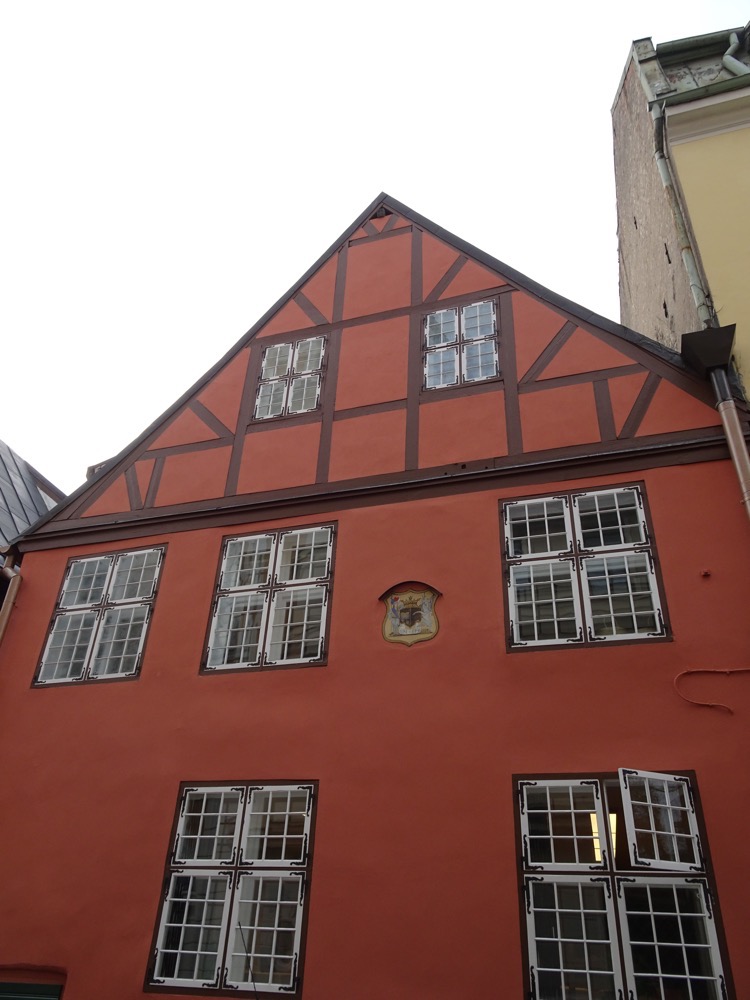 This is the White Tower of the Riga Castel, now the Riga Presidential Palace – apparently they won’t let us go in there… it’s like full of goverment officials and stuff.
This is the White Tower of the Riga Castel, now the Riga Presidential Palace – apparently they won’t let us go in there… it’s like full of goverment officials and stuff.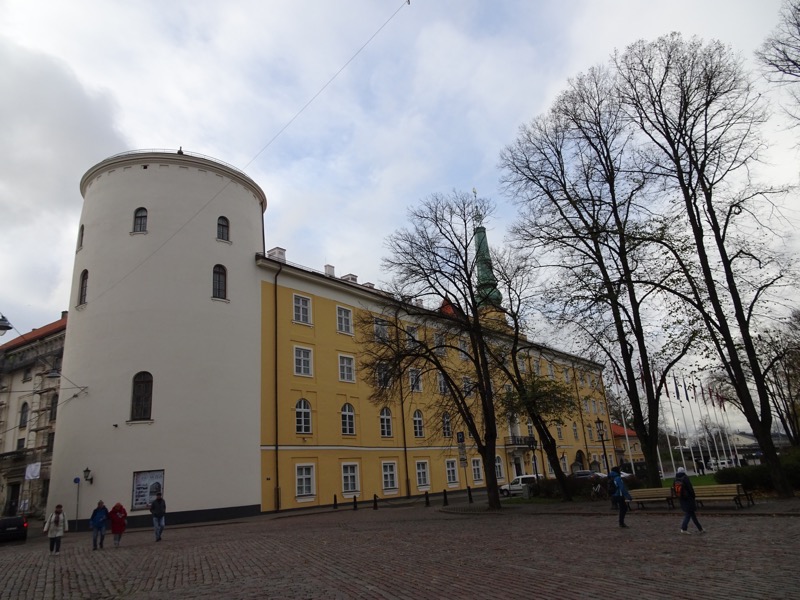
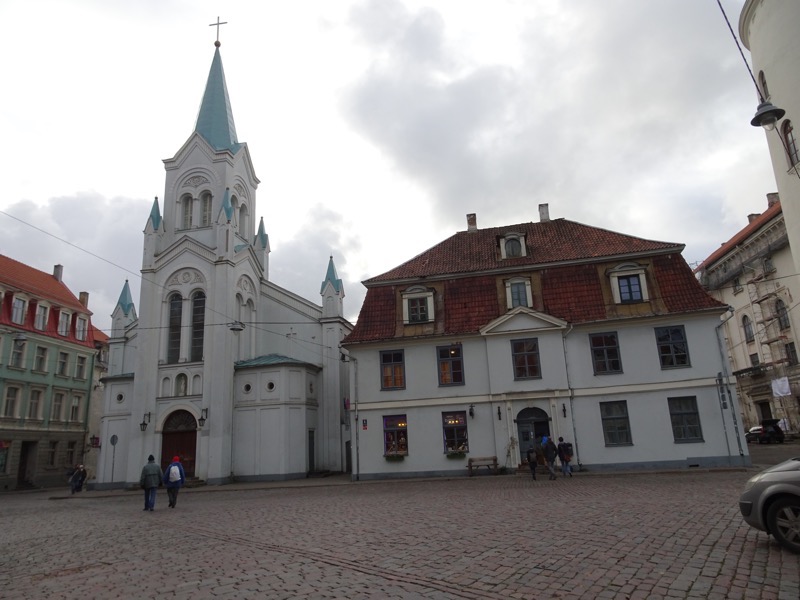 Anglican church – St Something… not Mary.
Anglican church – St Something… not Mary.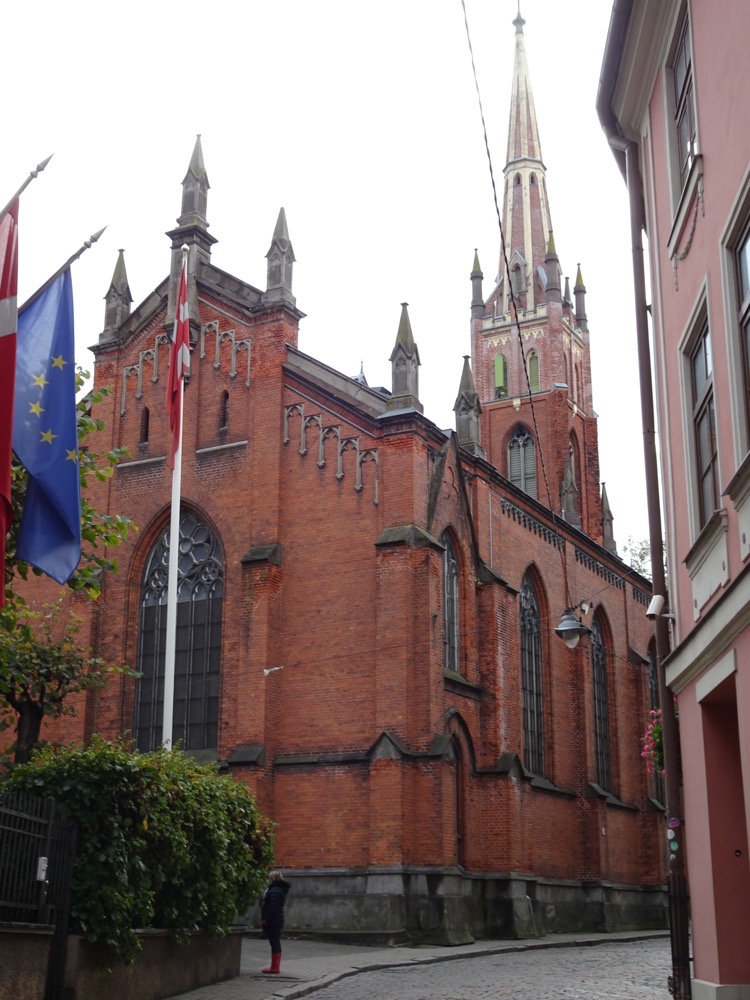
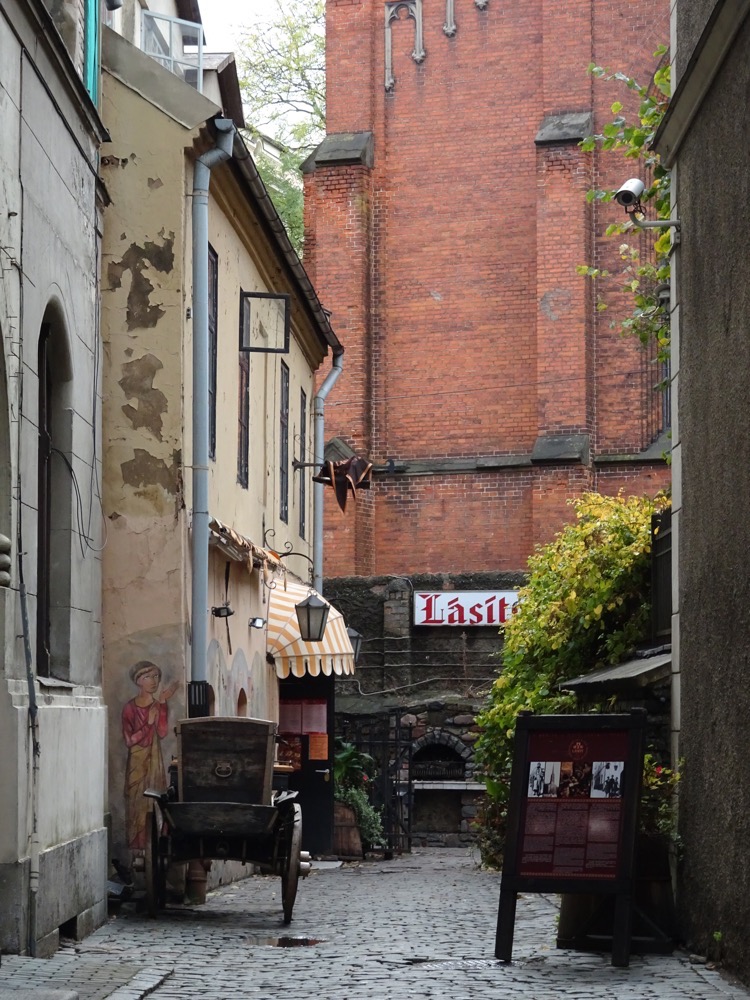 Everywhere you look is a cute little alleyway with nooks and crannies and interesting little cafes and shops.
Everywhere you look is a cute little alleyway with nooks and crannies and interesting little cafes and shops.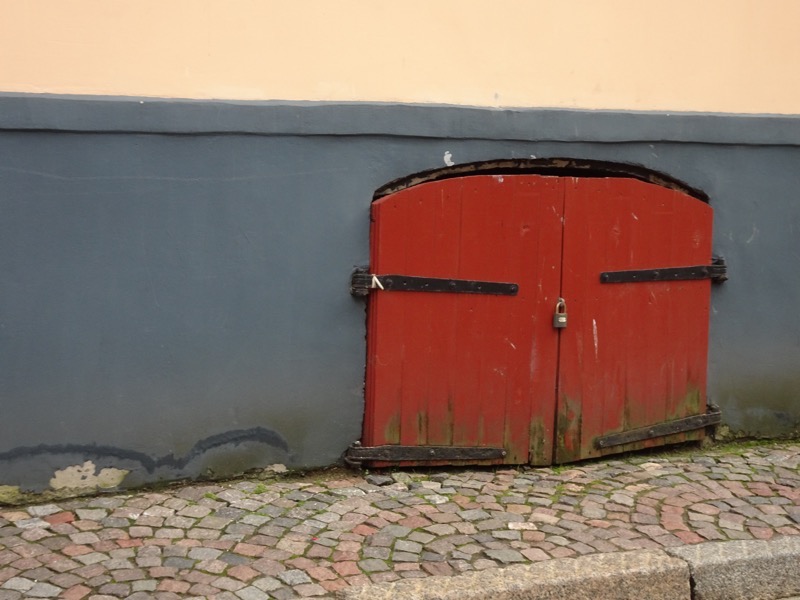 In Iceland, we got used to driving around a hillside and being greeting with yet another stunning landscape – here you walk around a corner and are greeted by yet another stunningly restore/kept historical building. It’s phenomenal.
In Iceland, we got used to driving around a hillside and being greeting with yet another stunning landscape – here you walk around a corner and are greeted by yet another stunningly restore/kept historical building. It’s phenomenal.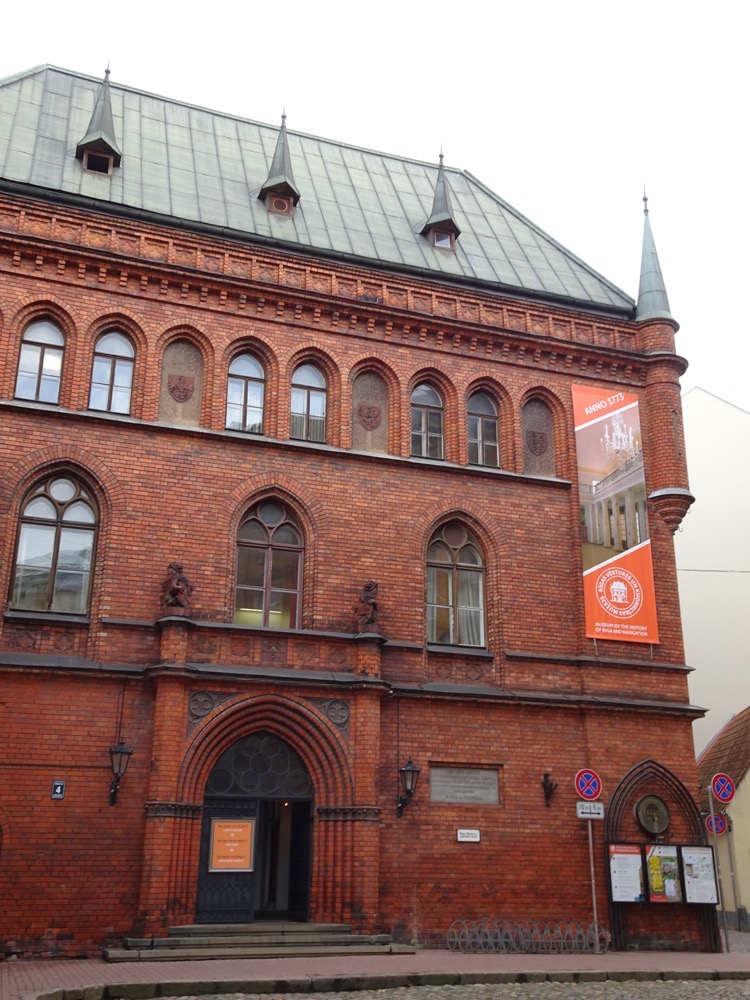
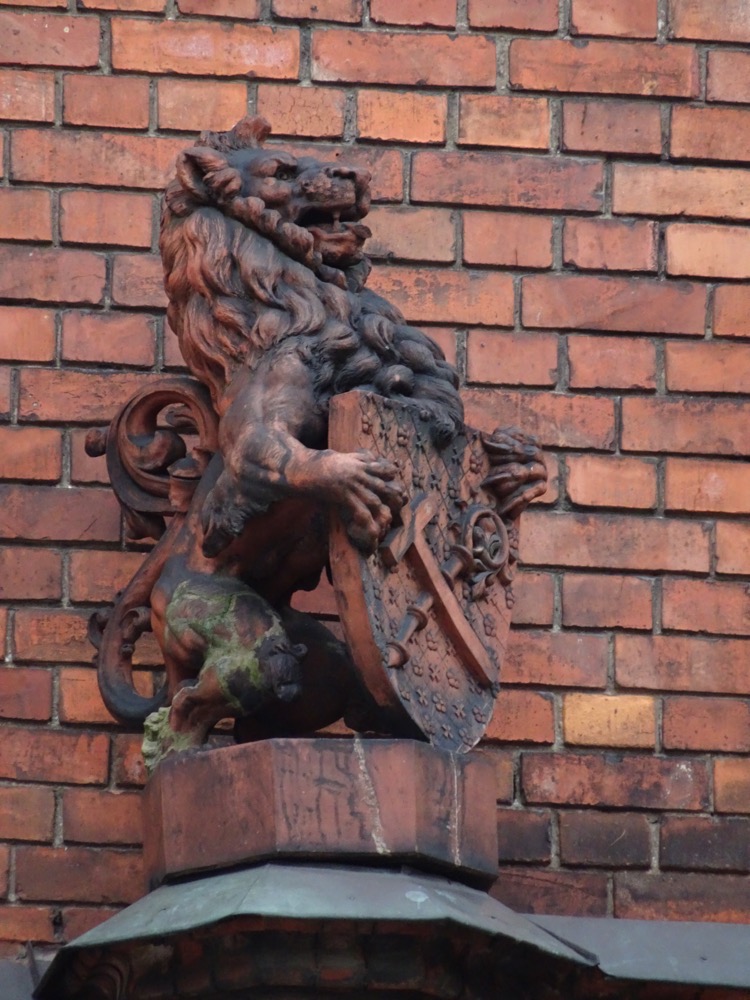 We saw a shop that said ‘wool and linen’ on the outside sign and decided to pop in and have a look at the fabrics for sale. We found ourselves in a national costume shop called, Senaklets: http://www.senaklets.lv/eng.php where one can go to buy well, national costumes, fabrics to make the same and dress accessories to go with them.
We saw a shop that said ‘wool and linen’ on the outside sign and decided to pop in and have a look at the fabrics for sale. We found ourselves in a national costume shop called, Senaklets: http://www.senaklets.lv/eng.php where one can go to buy well, national costumes, fabrics to make the same and dress accessories to go with them.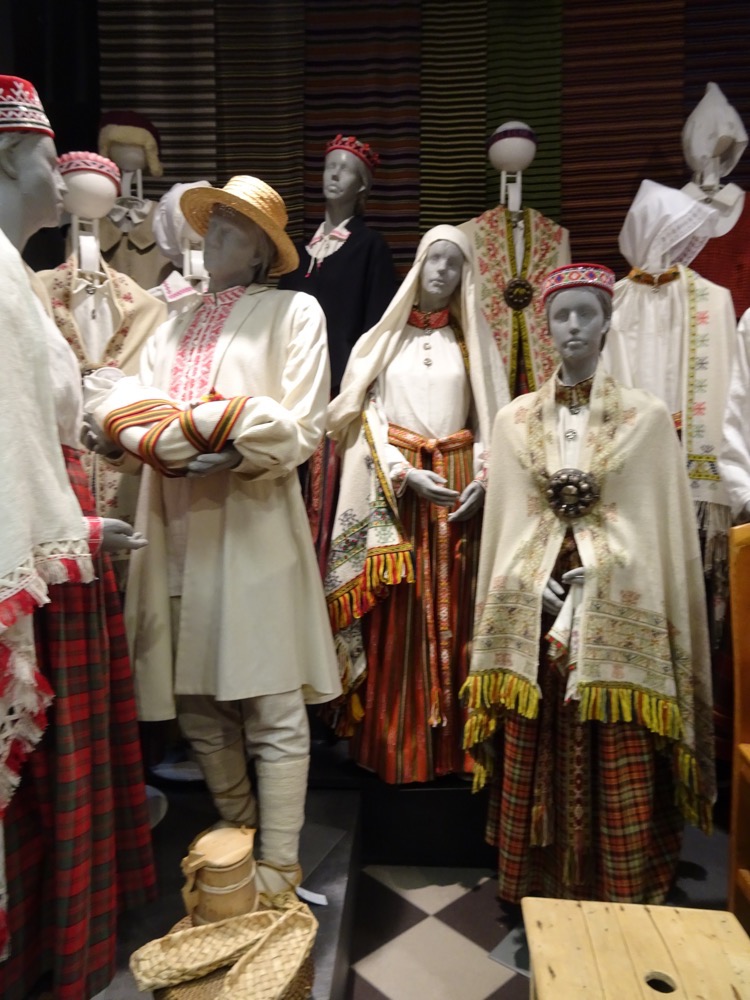 The first things I noticed was all the crazy expensive tablet woven bands in lengths up to 3m (patterns rather too modern but lovely).
The first things I noticed was all the crazy expensive tablet woven bands in lengths up to 3m (patterns rather too modern but lovely). 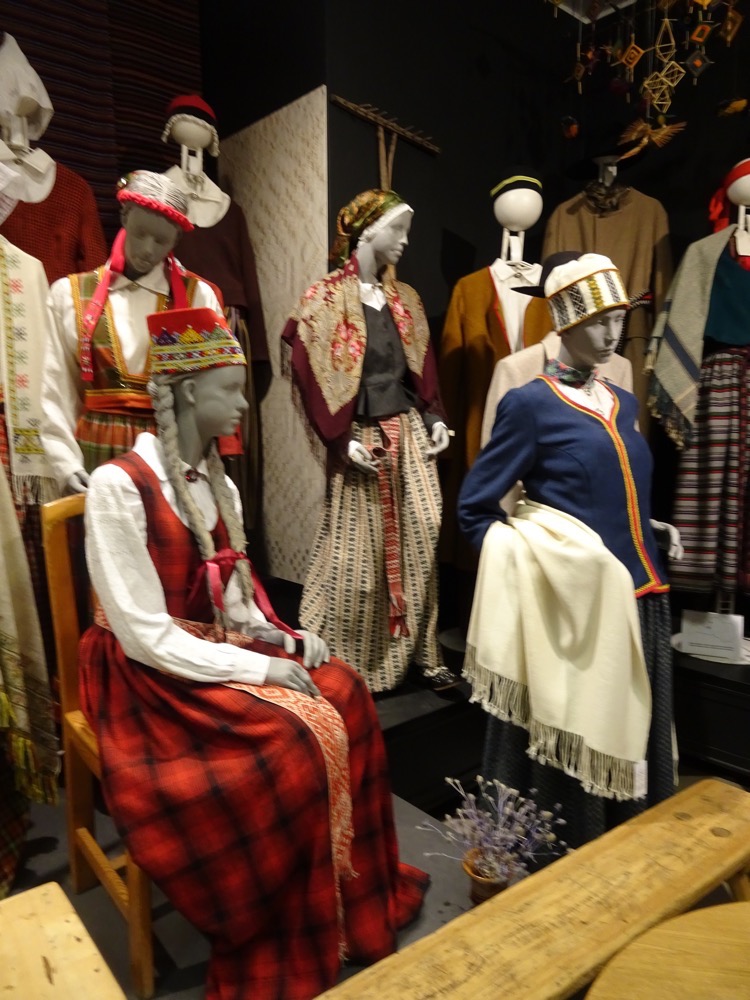 And then we moved into another room and there they were… all the medieval costumes I had laboriously been trying to photograph through glass this morning at the national history museum. Le sigh.
And then we moved into another room and there they were… all the medieval costumes I had laboriously been trying to photograph through glass this morning at the national history museum. Le sigh.
So this outfit has a set of chains, brooches, and spacers I have been researching, and figuring out how to make, since I first saw a similar set at the British Museum in 2015… it seems here, if you have the Euros – you can just buy a set!
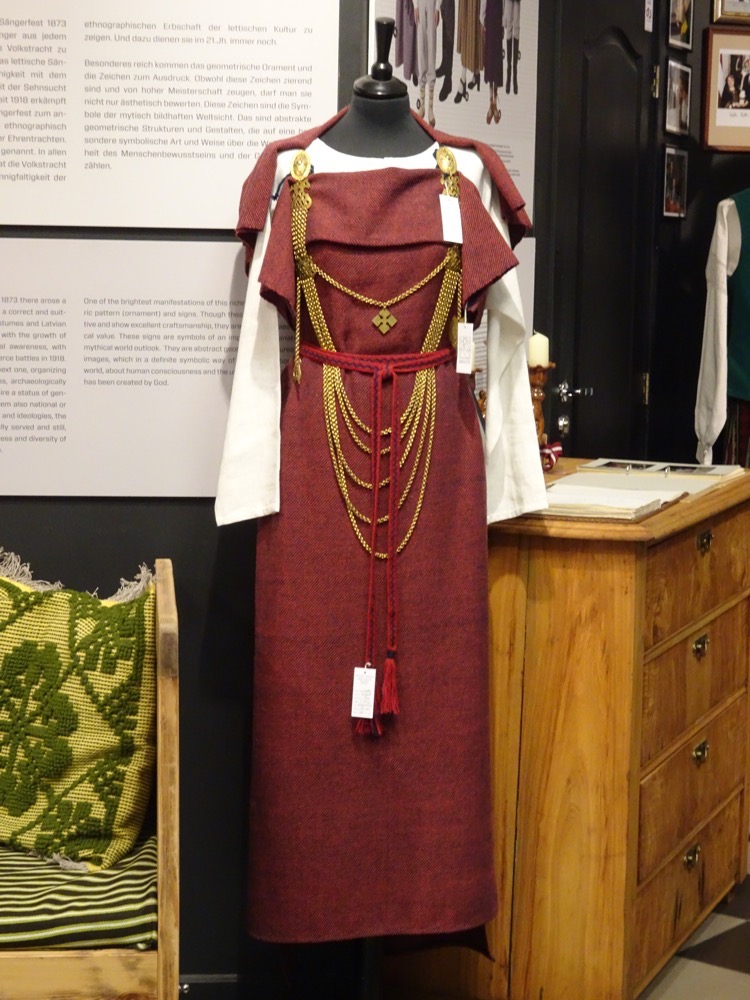 Fucking expensive. But urgh, I rolled my eyes. So much effort gone into researching these…
Fucking expensive. But urgh, I rolled my eyes. So much effort gone into researching these…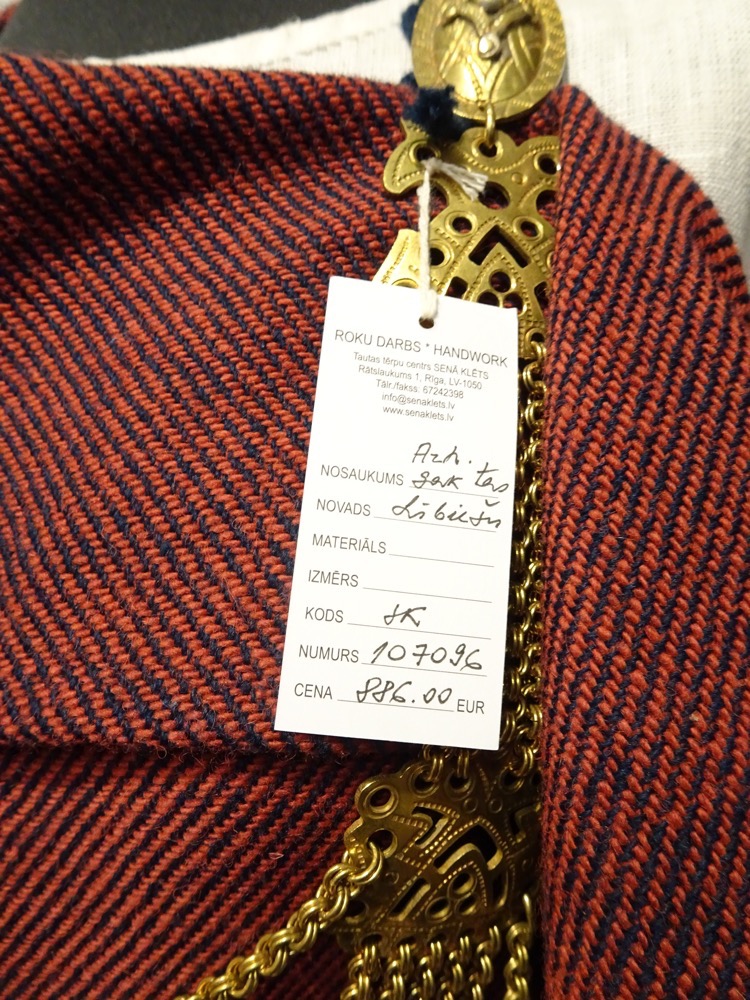
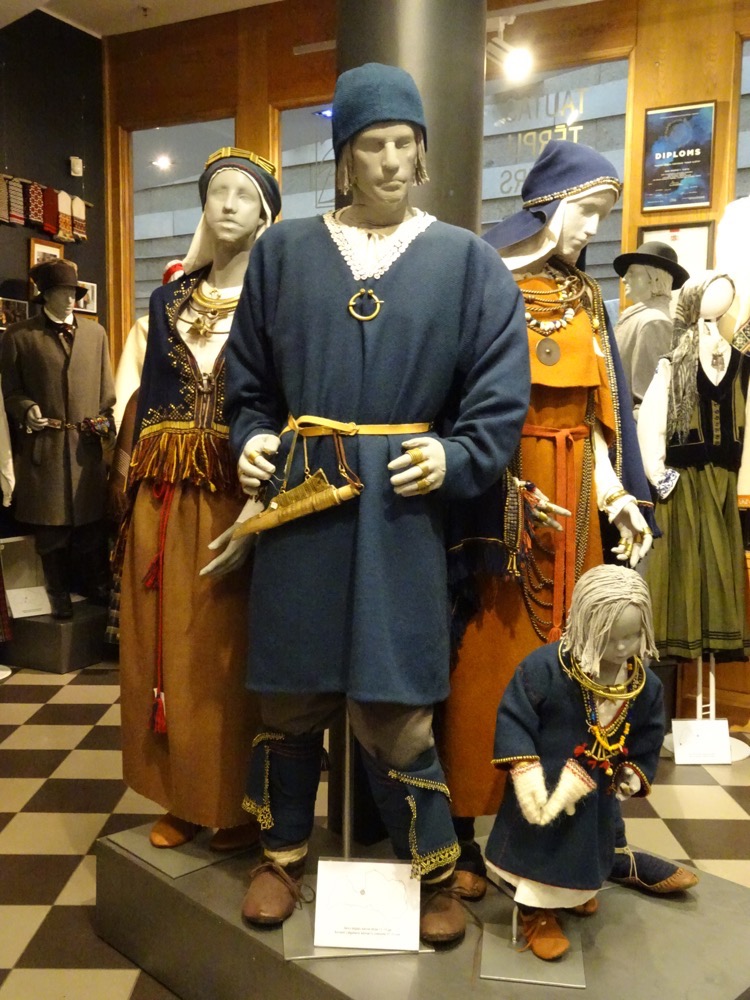 Gorgeous Finnish/Baltic shawls all done. Couldn’t find a price tag on this one – I imagine if you have to ask how much it is, you can’t afford it. I can tell you that if I had a spare few thousand Euro I would have walked out of there well kitted out.
Gorgeous Finnish/Baltic shawls all done. Couldn’t find a price tag on this one – I imagine if you have to ask how much it is, you can’t afford it. I can tell you that if I had a spare few thousand Euro I would have walked out of there well kitted out. 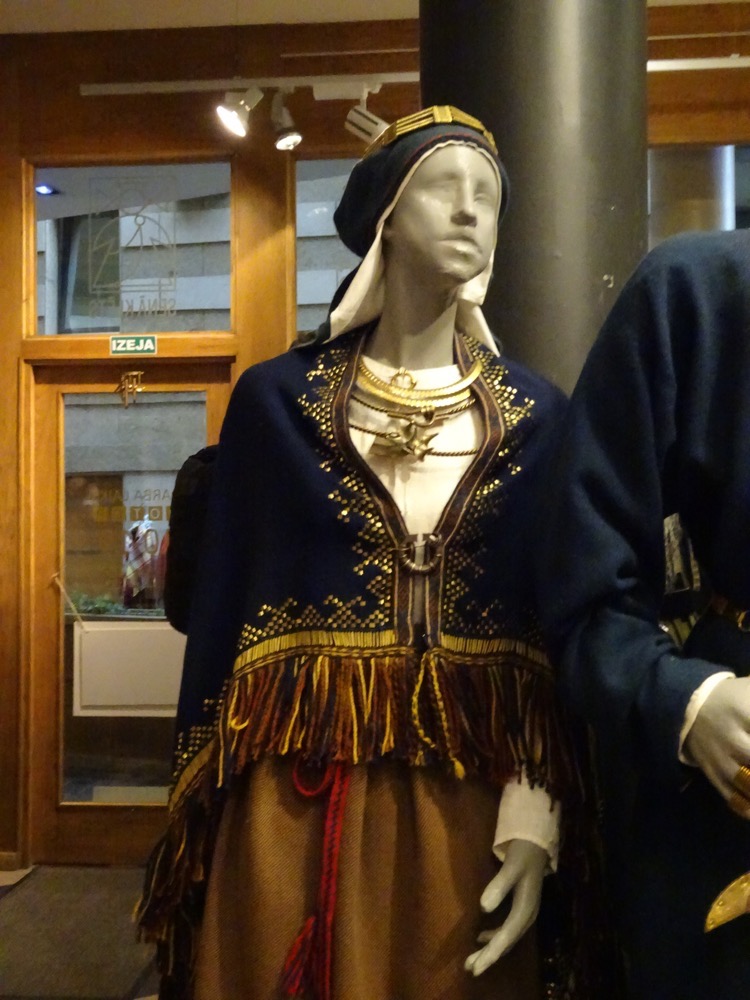 After that we found ourselves back in the Square in front of the House of the Blackheads and the state of Roland that I failed to capture earlier.
After that we found ourselves back in the Square in front of the House of the Blackheads and the state of Roland that I failed to capture earlier. 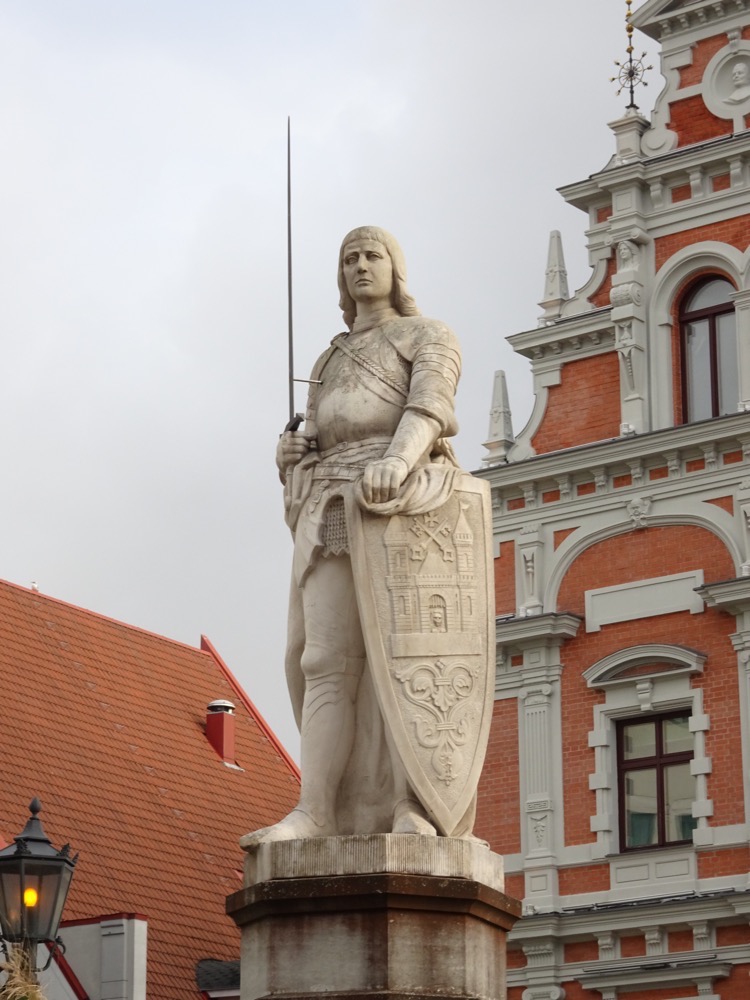
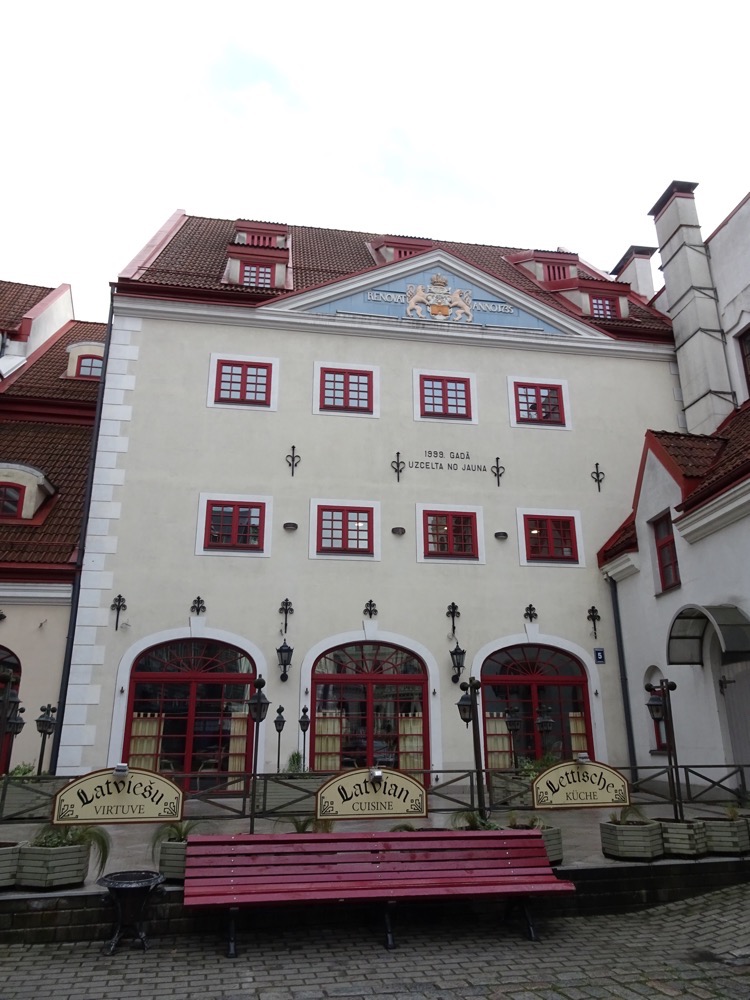
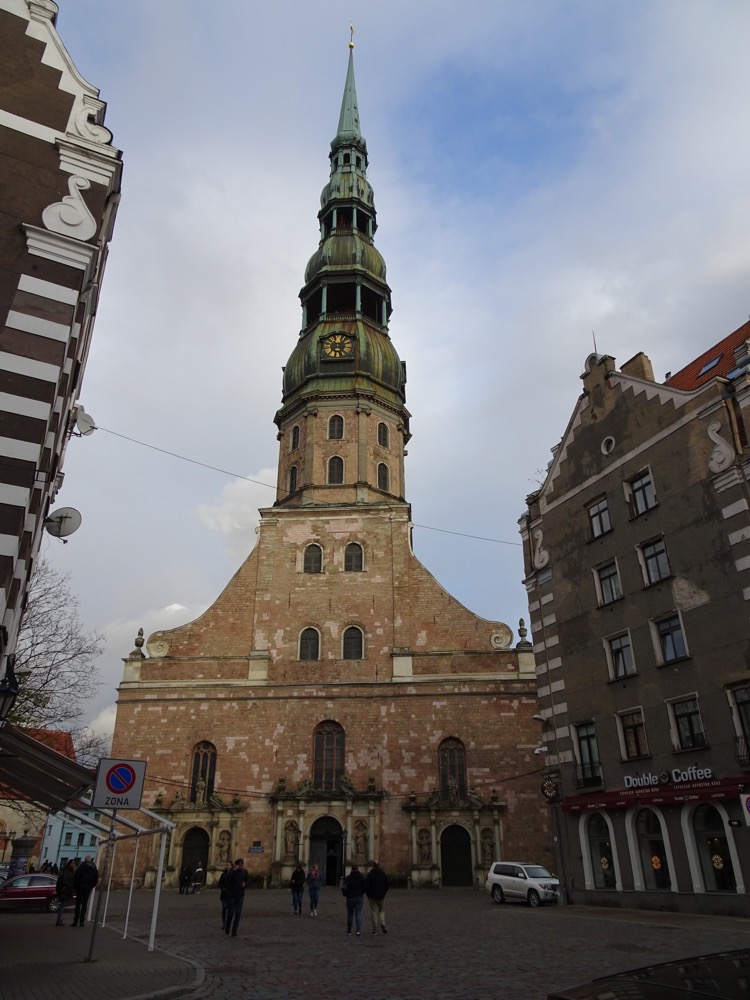 I had a lovely day out in Riga. There is plenty more to see here, but we have a big day ahead of us tomorrow, so we called it quits just as it was starting to get dark – mostly because it was also starting to get much colder too!
I had a lovely day out in Riga. There is plenty more to see here, but we have a big day ahead of us tomorrow, so we called it quits just as it was starting to get dark – mostly because it was also starting to get much colder too!
